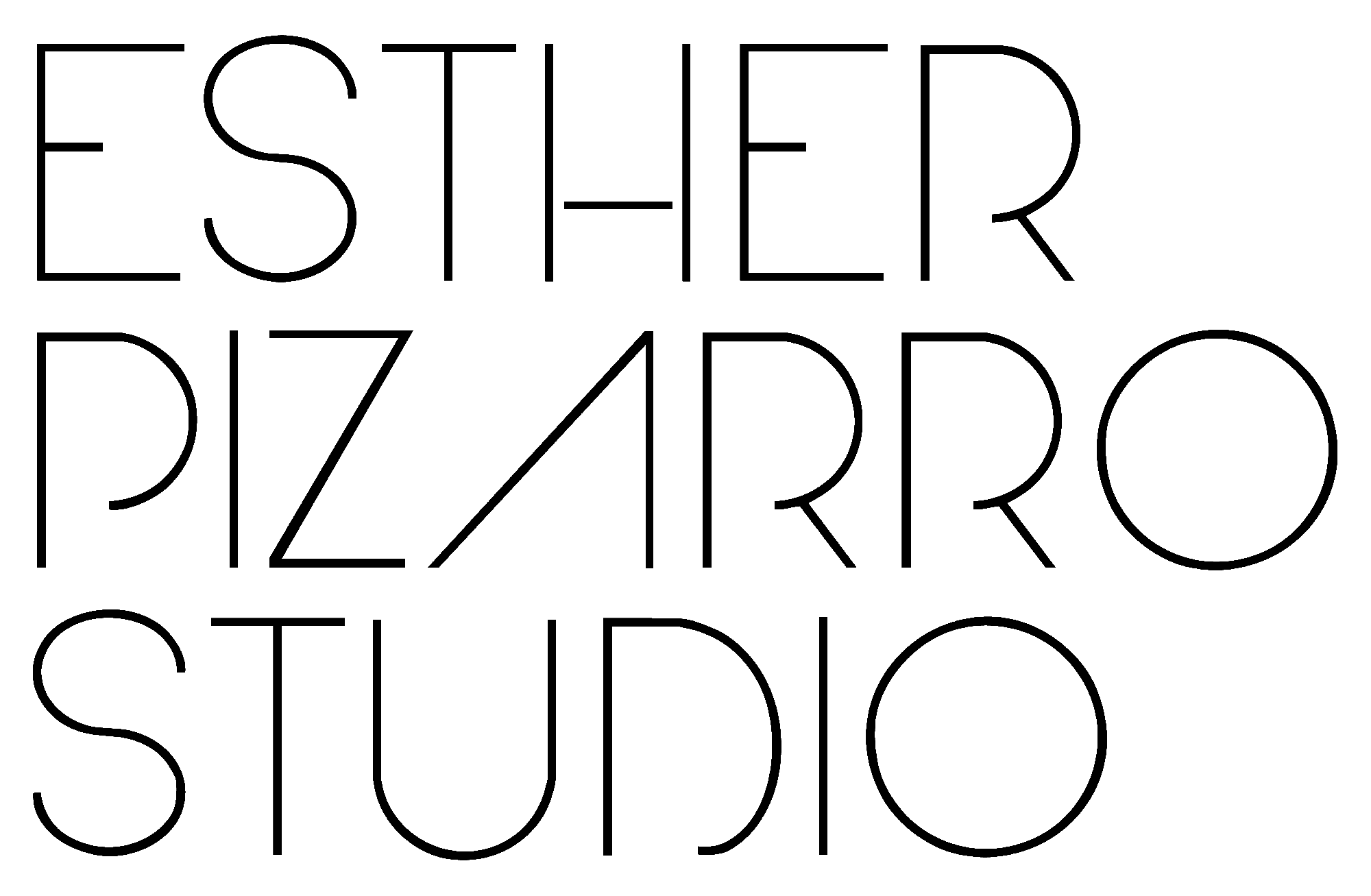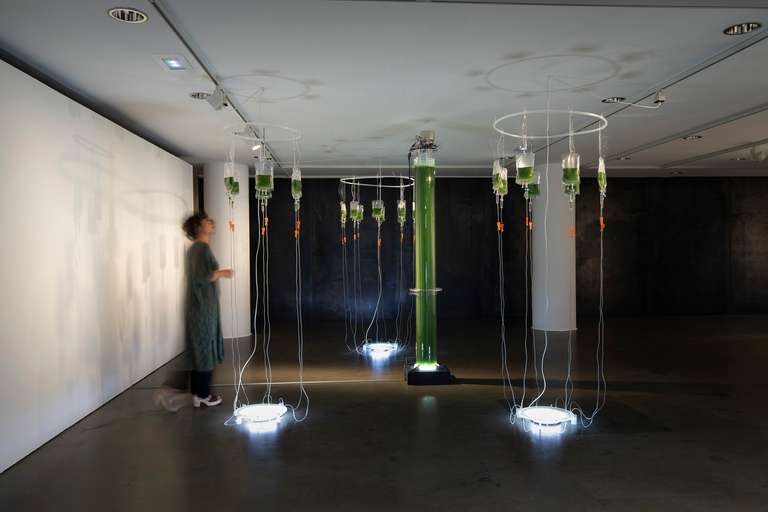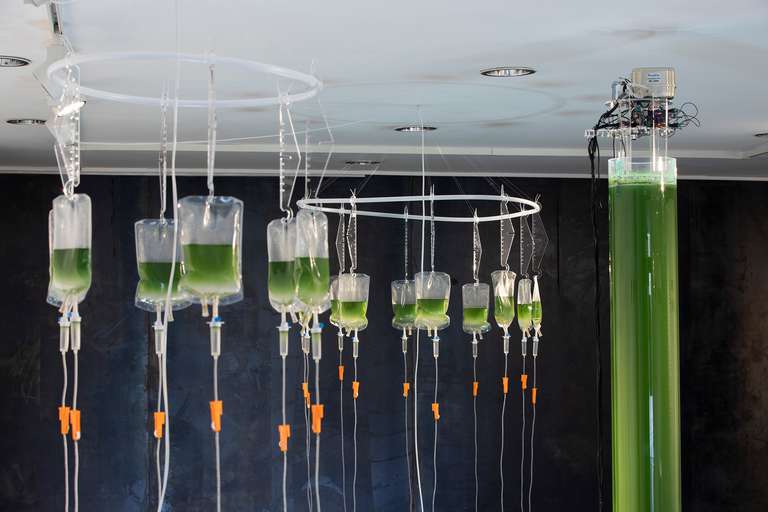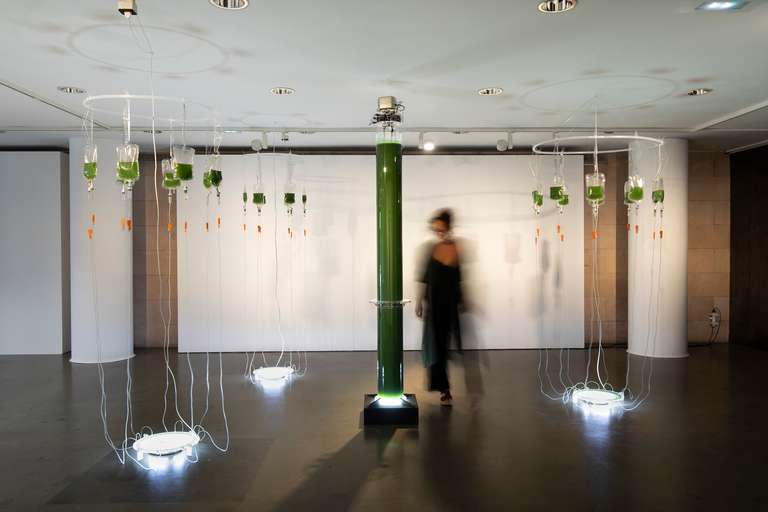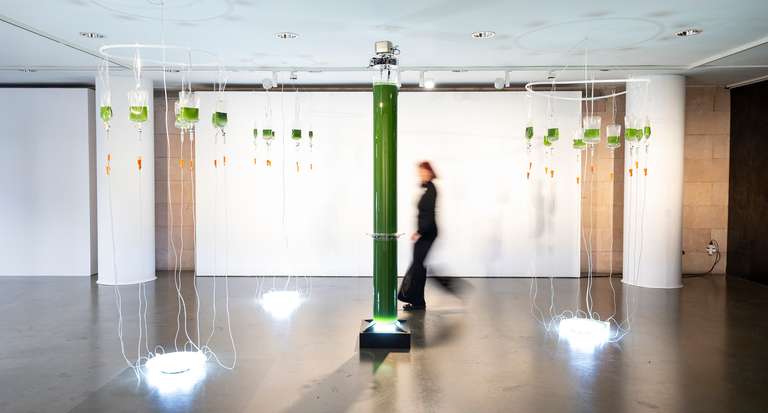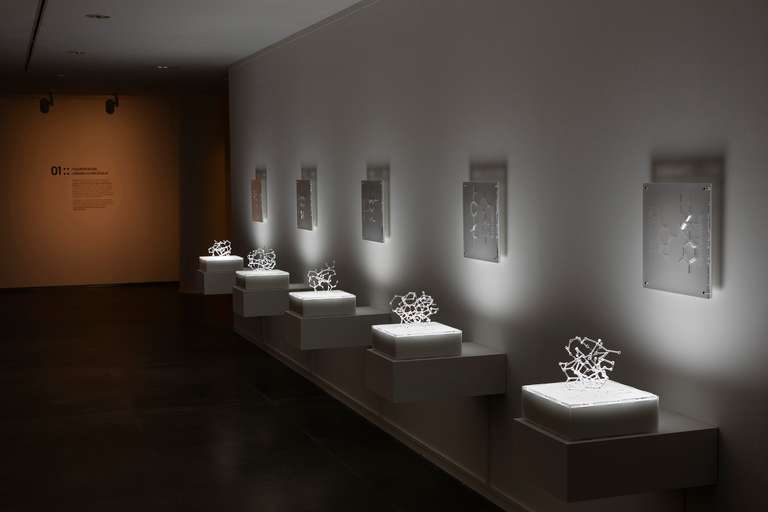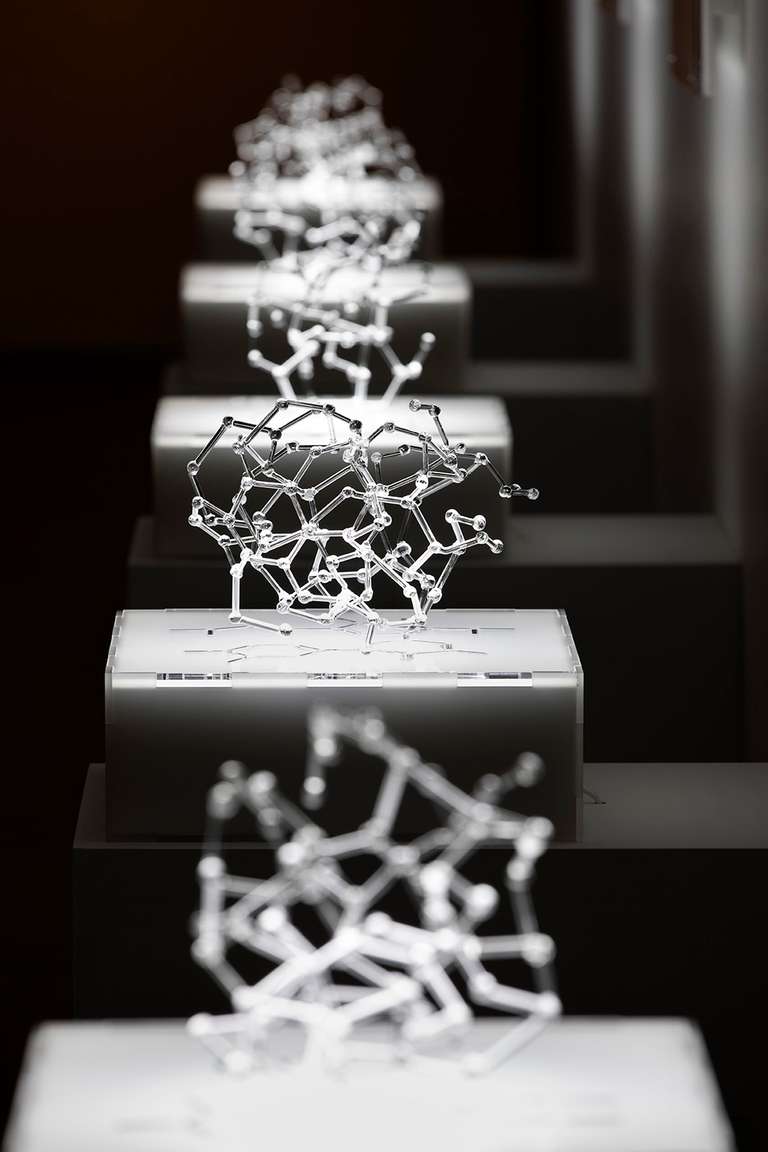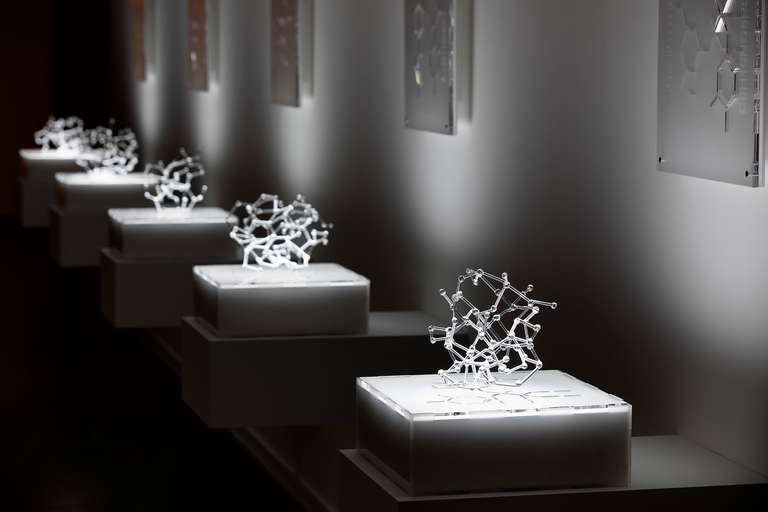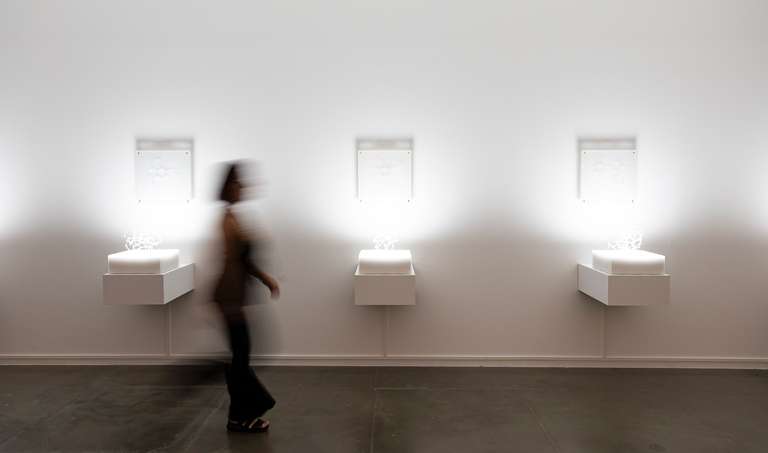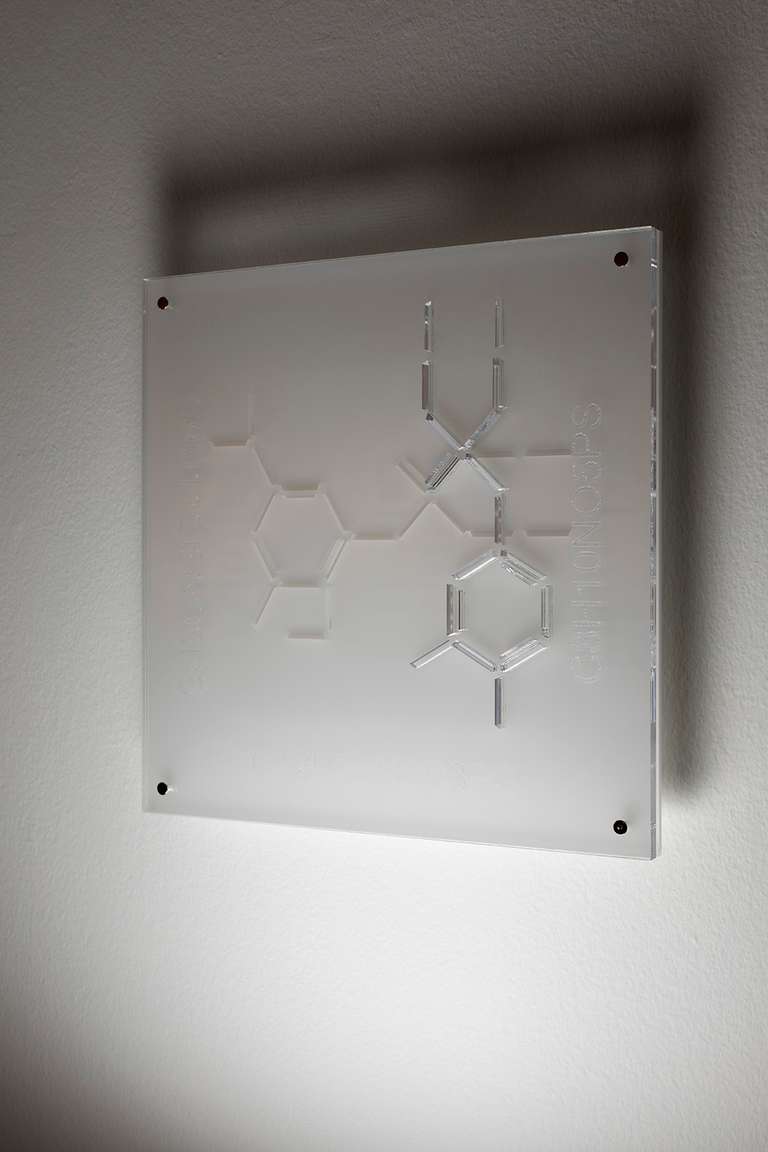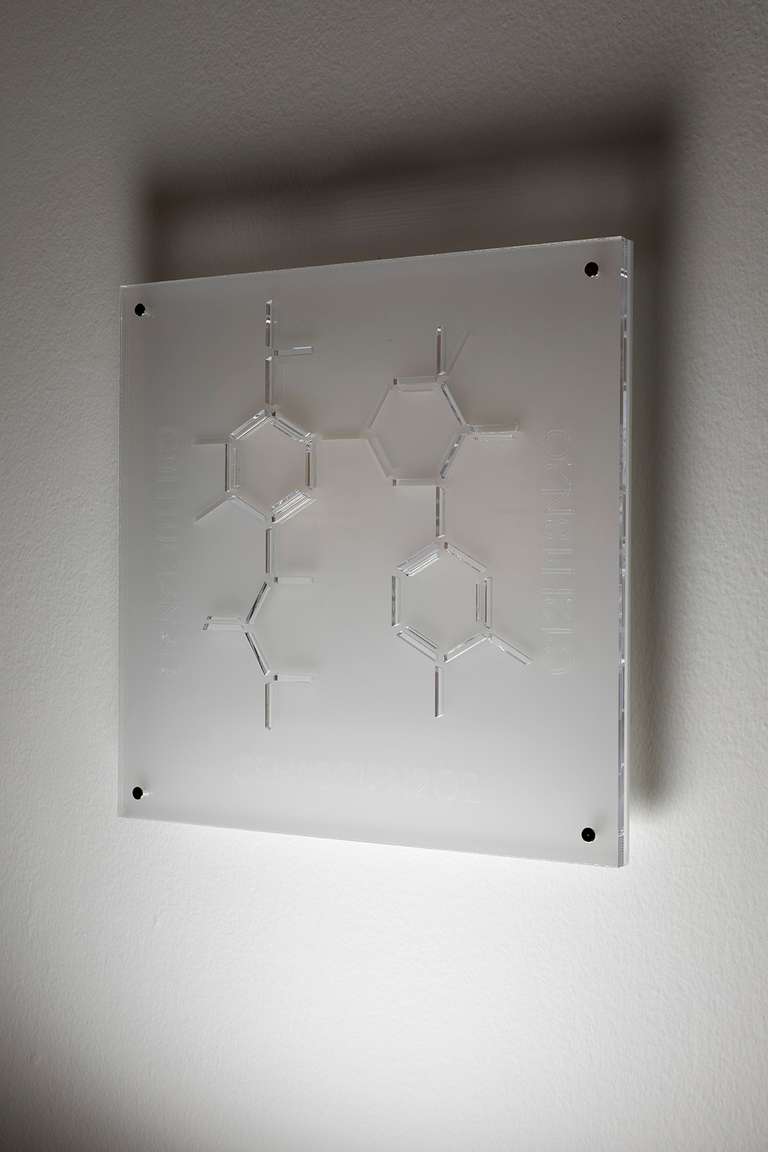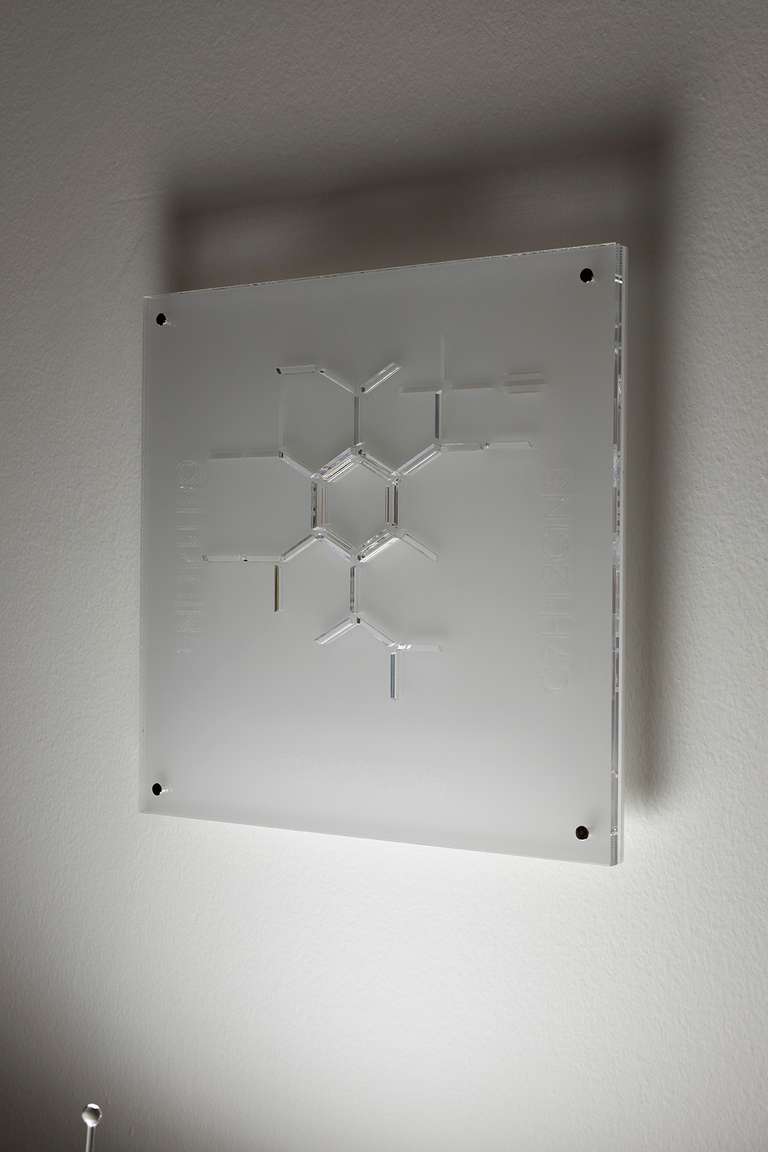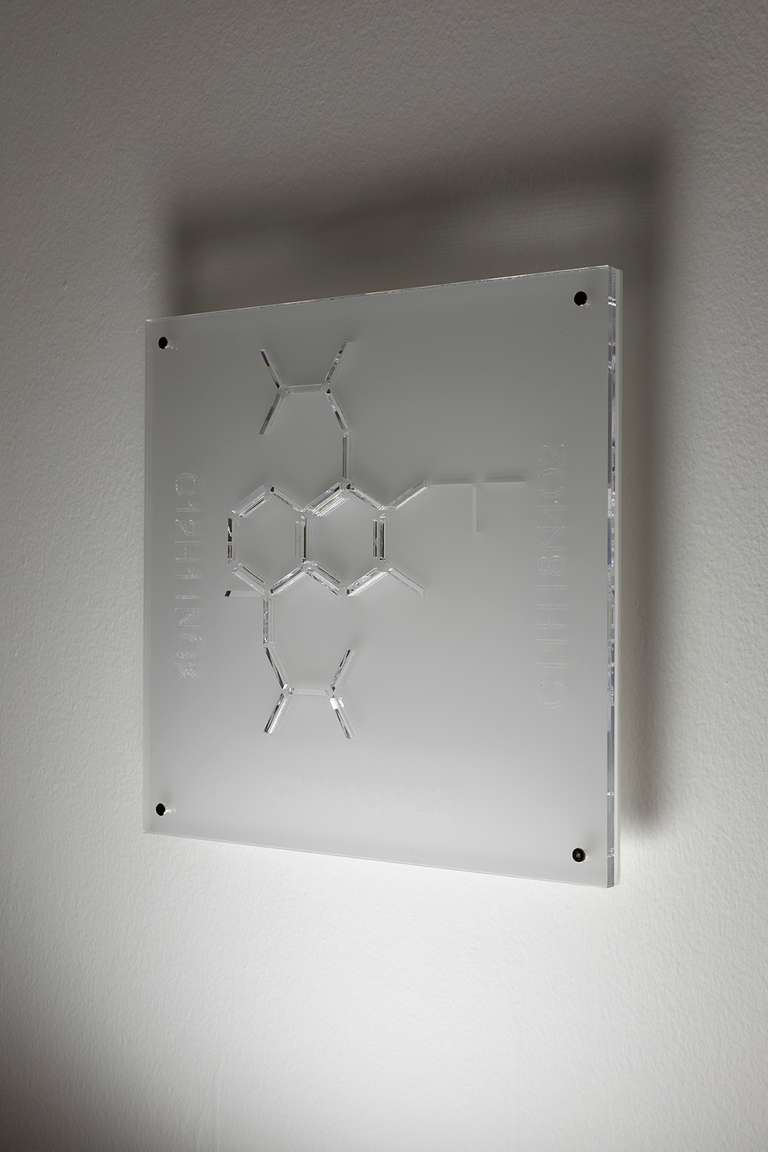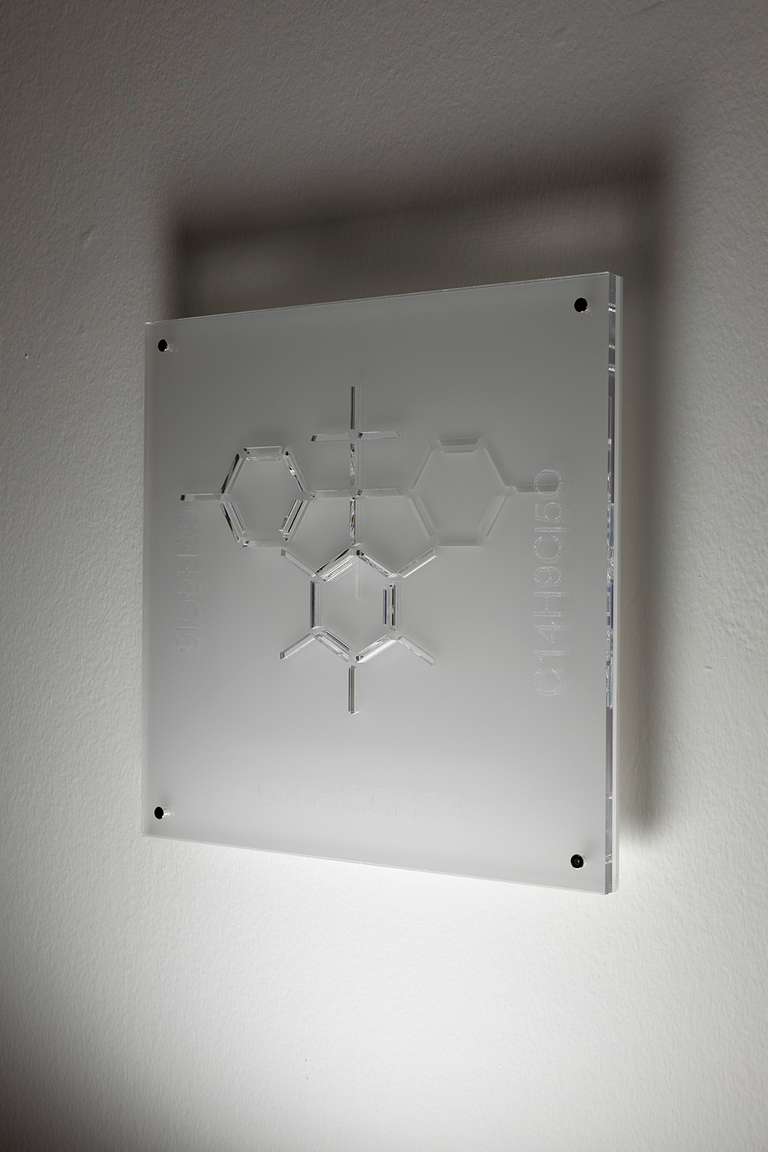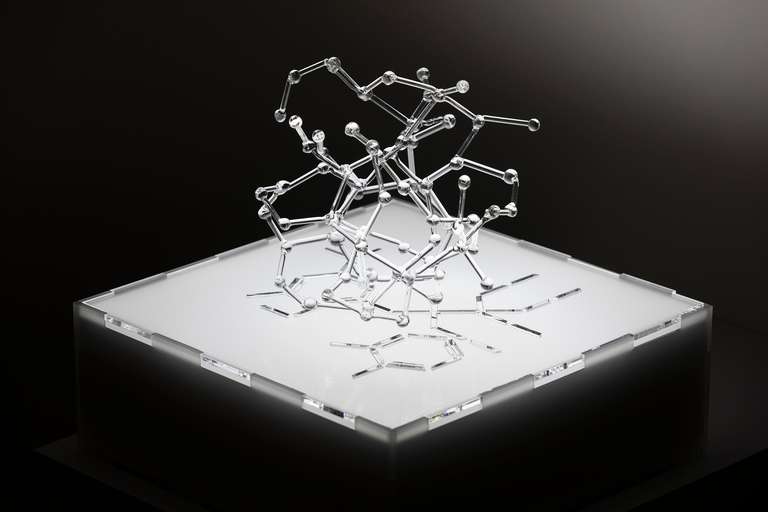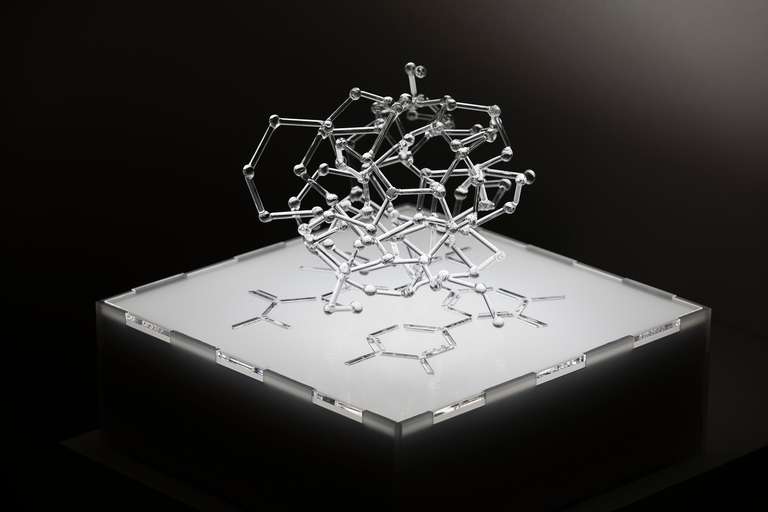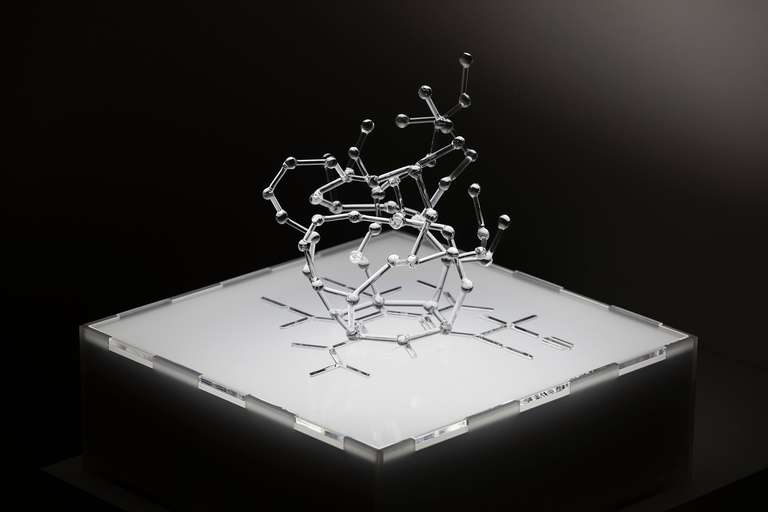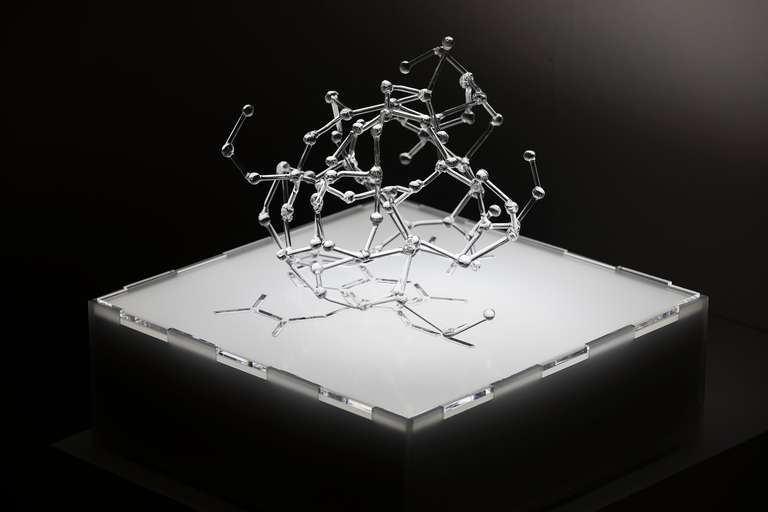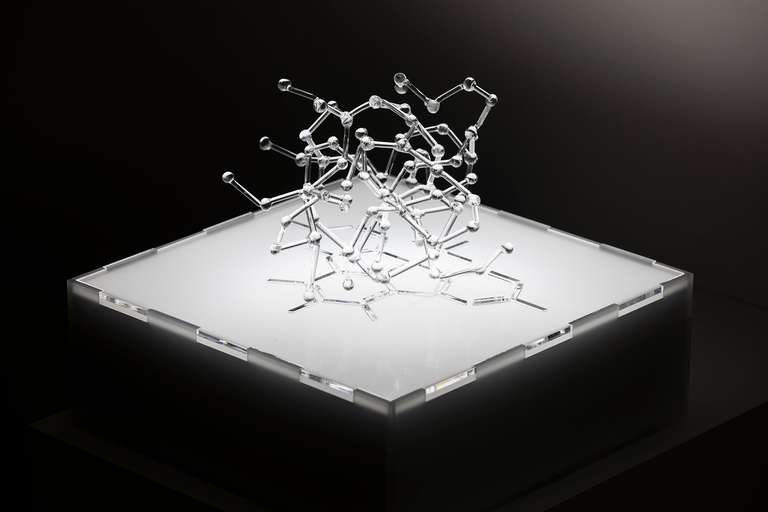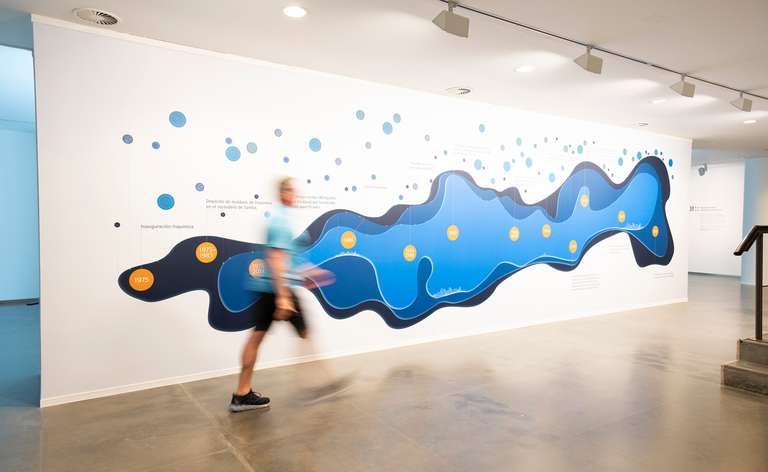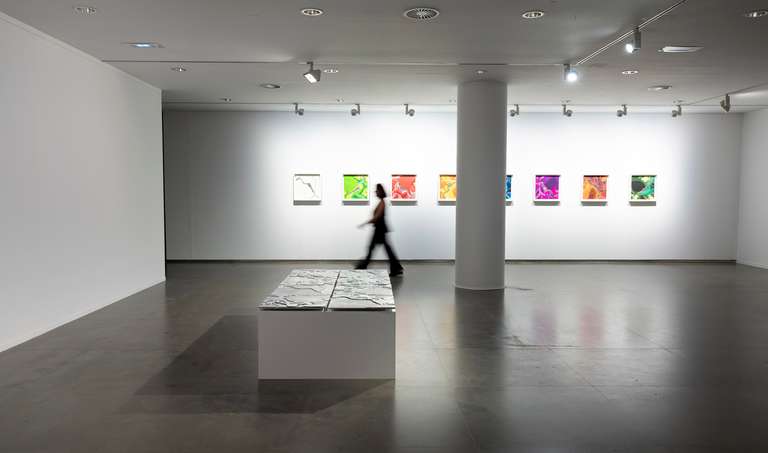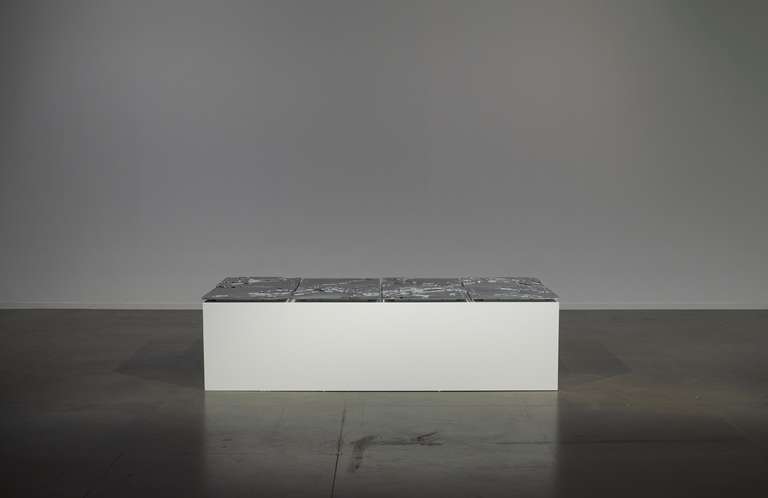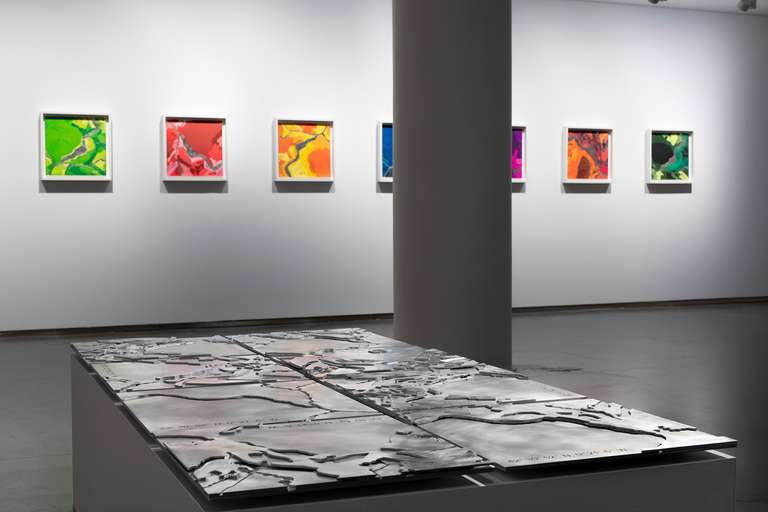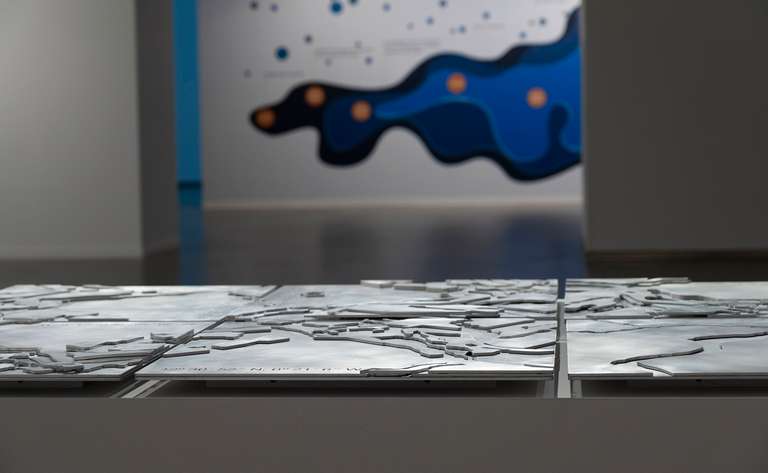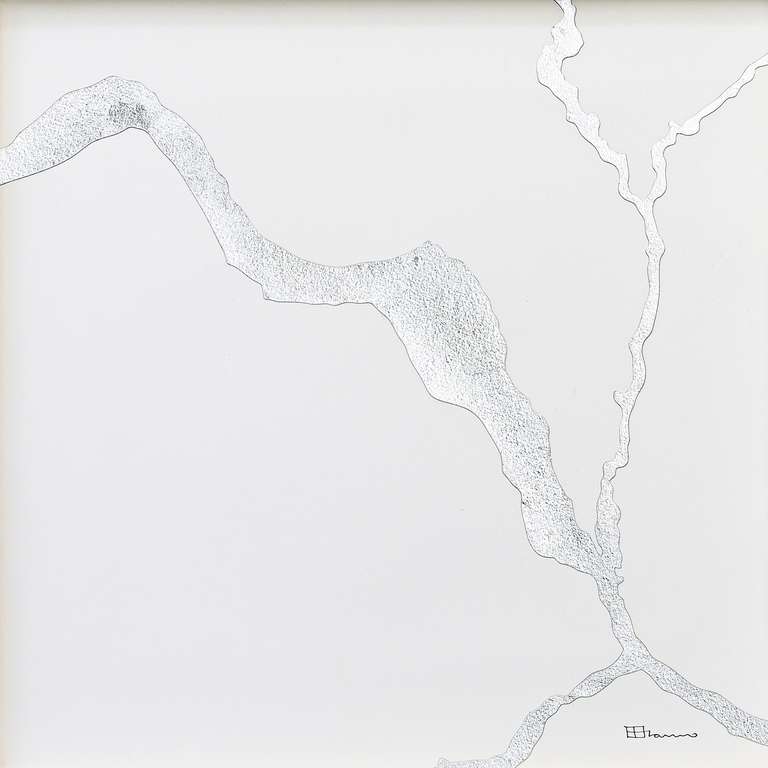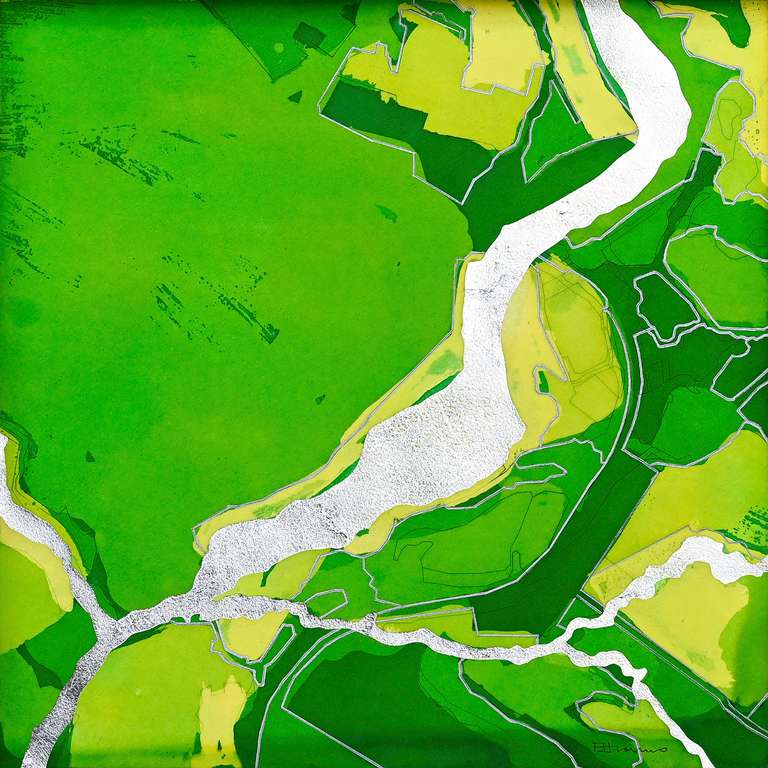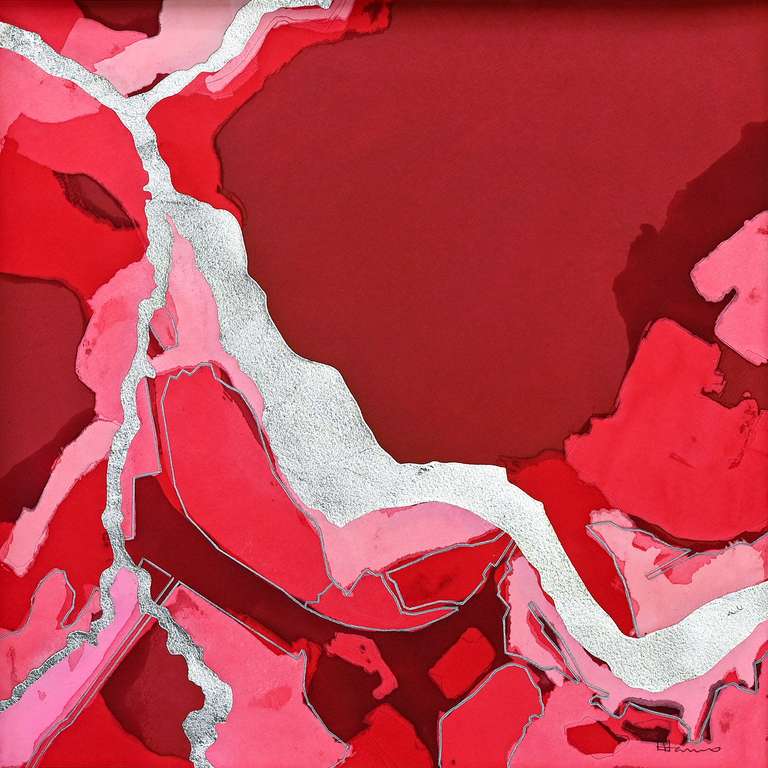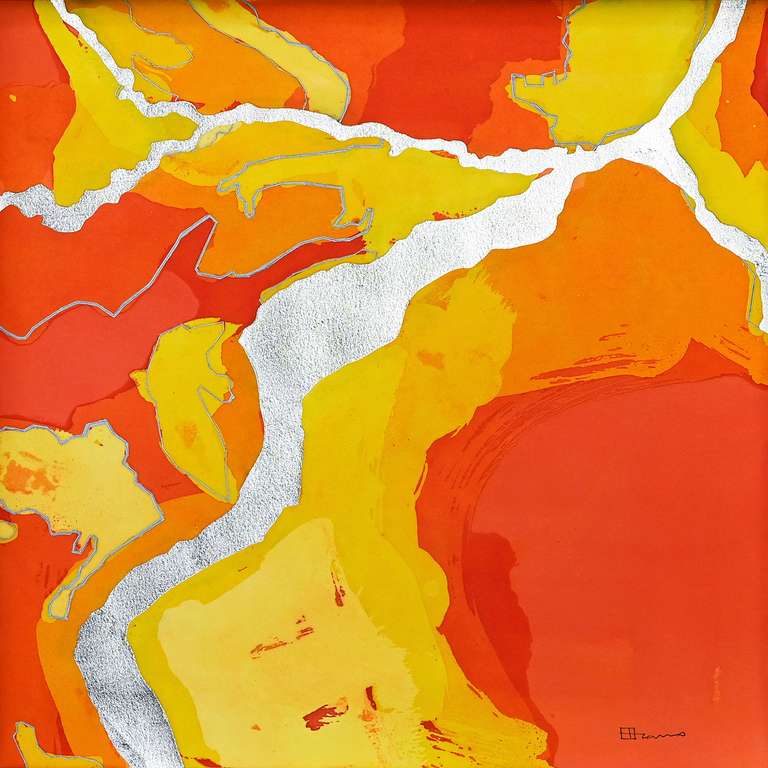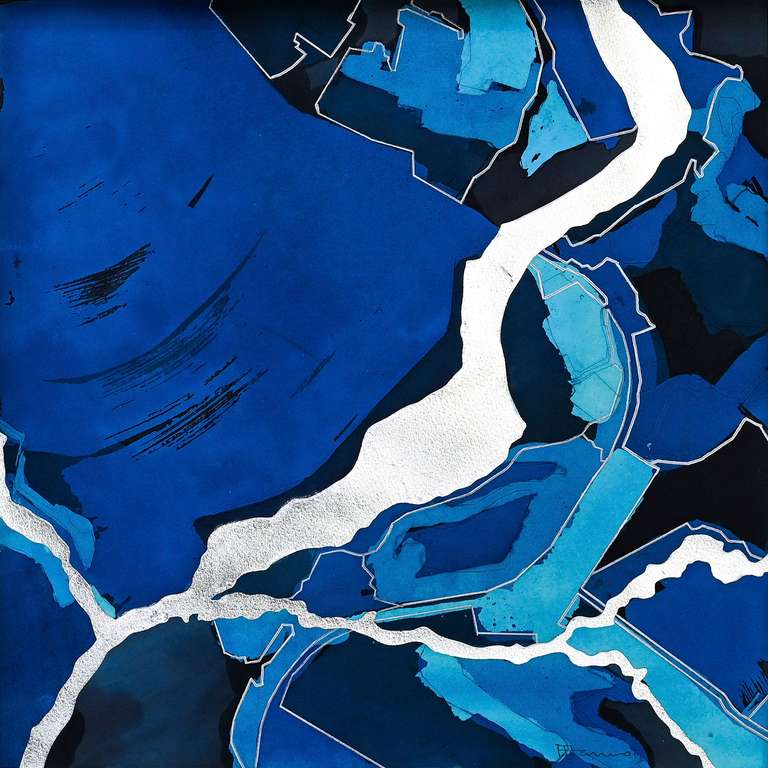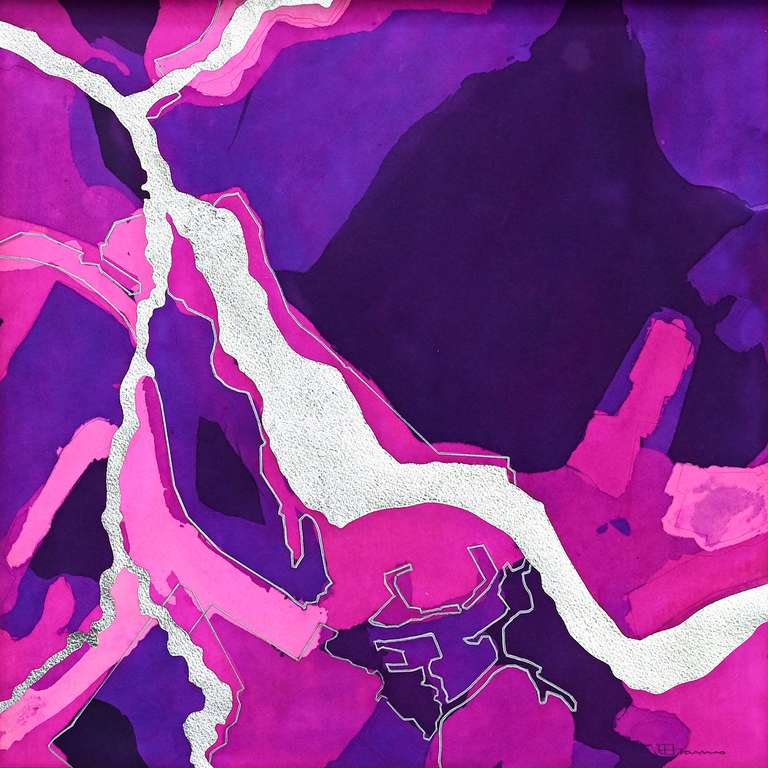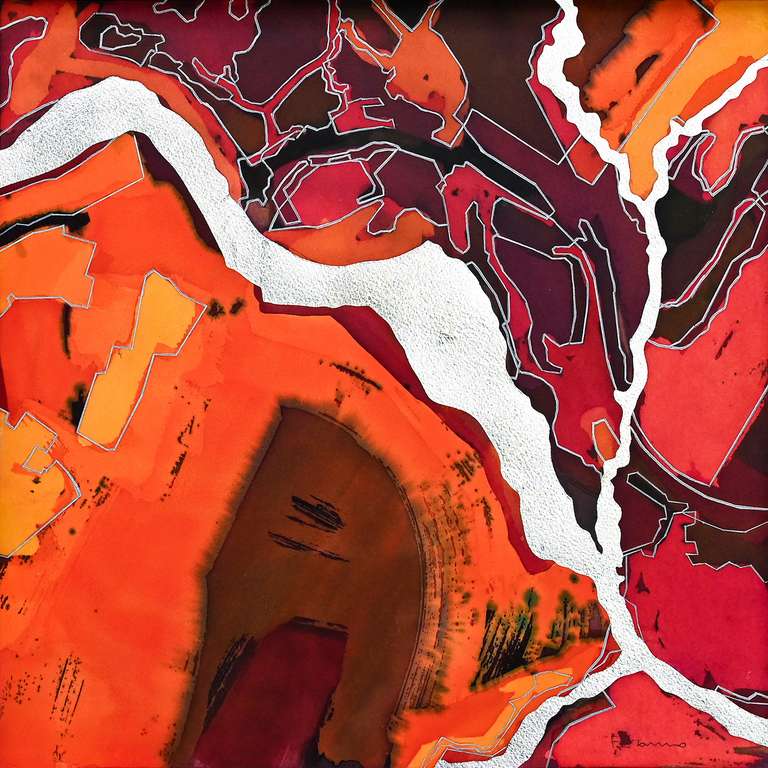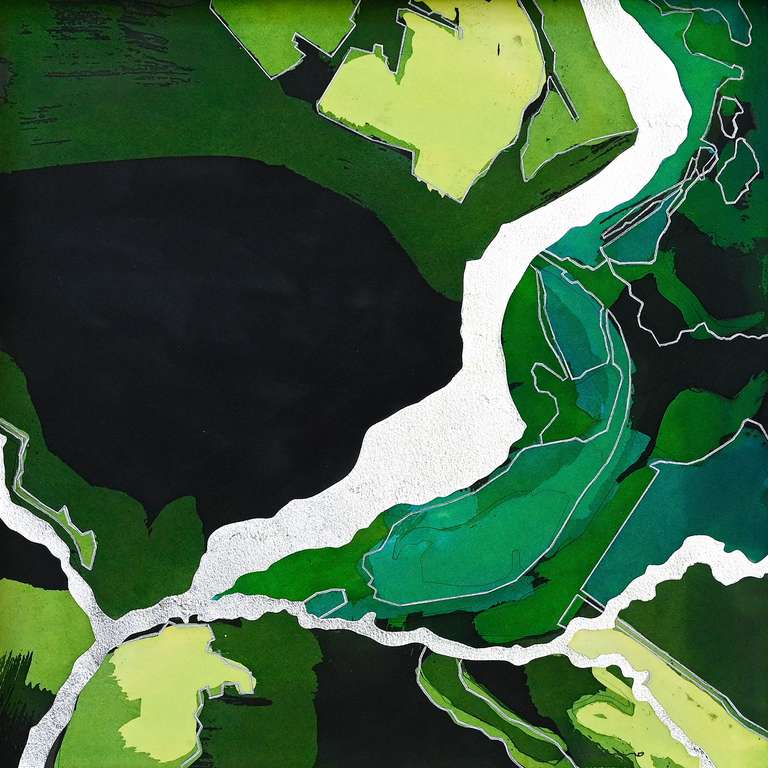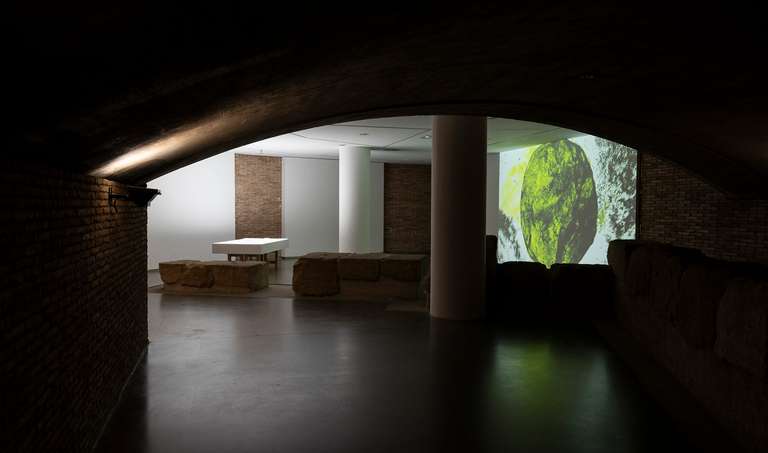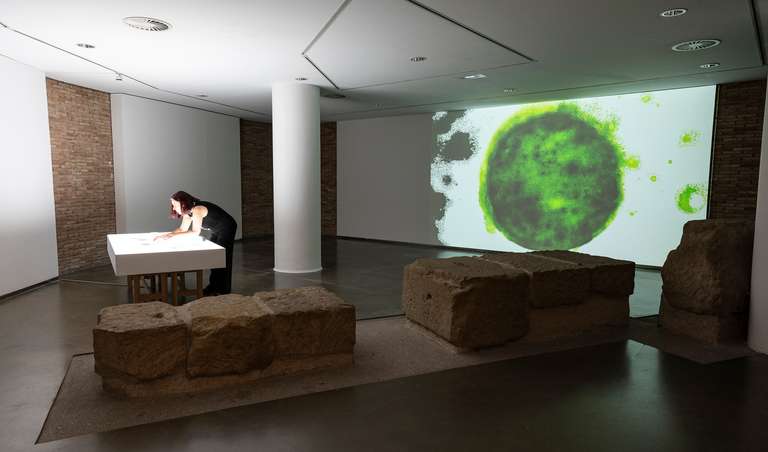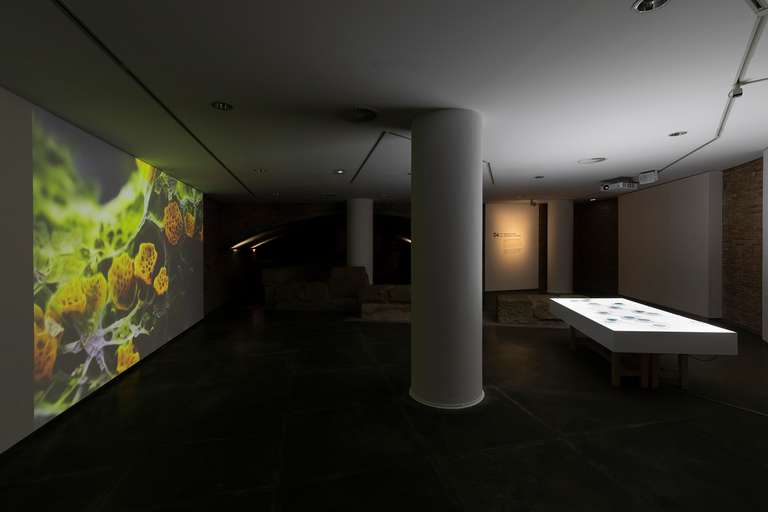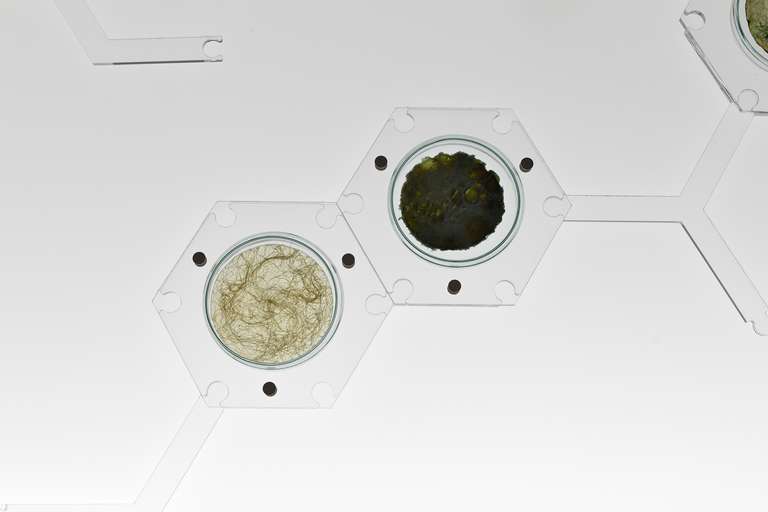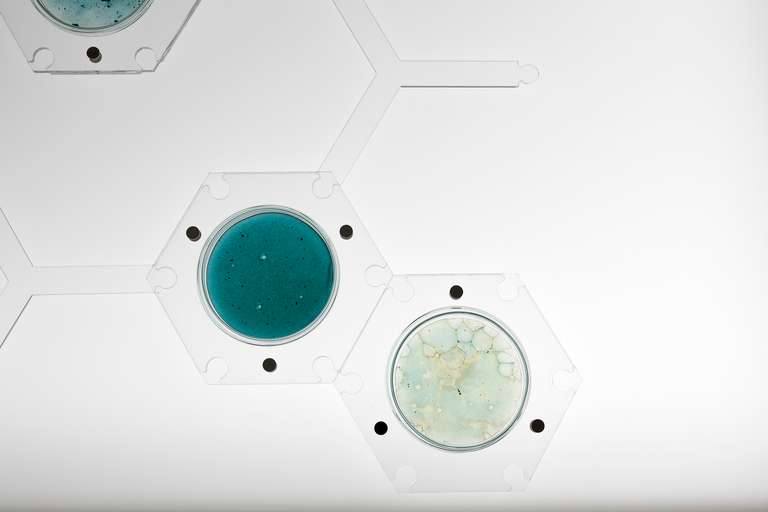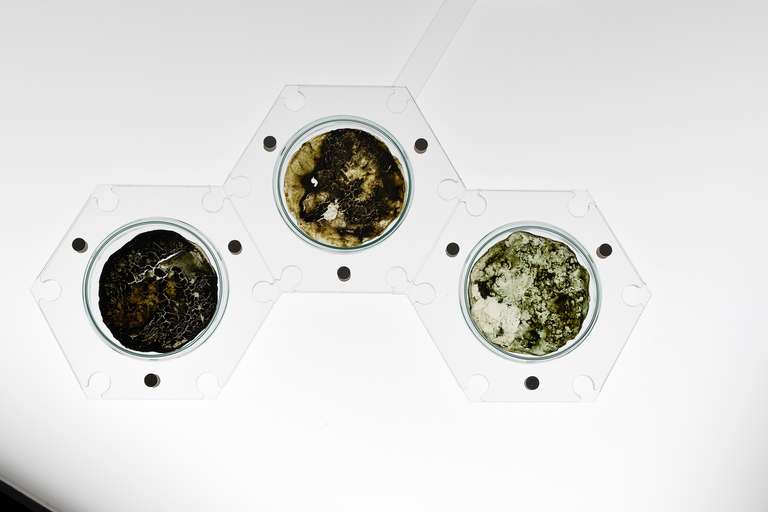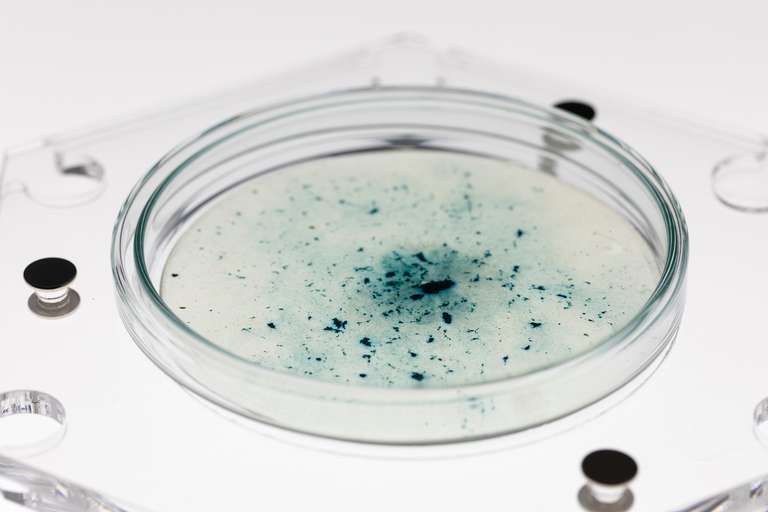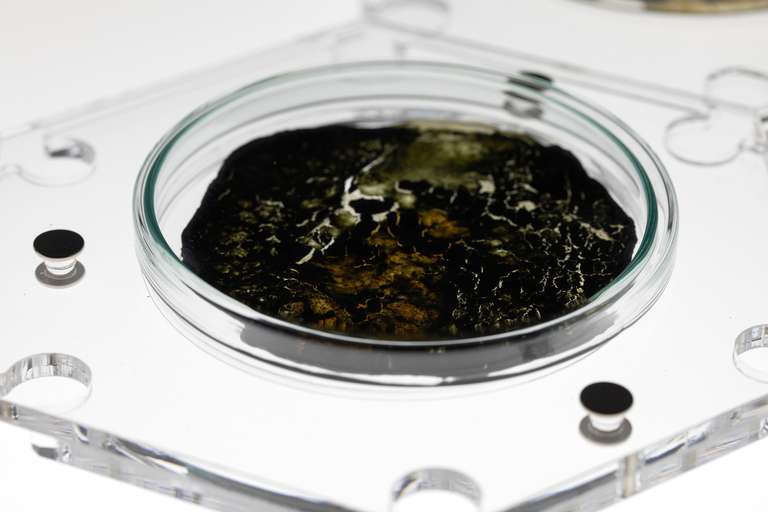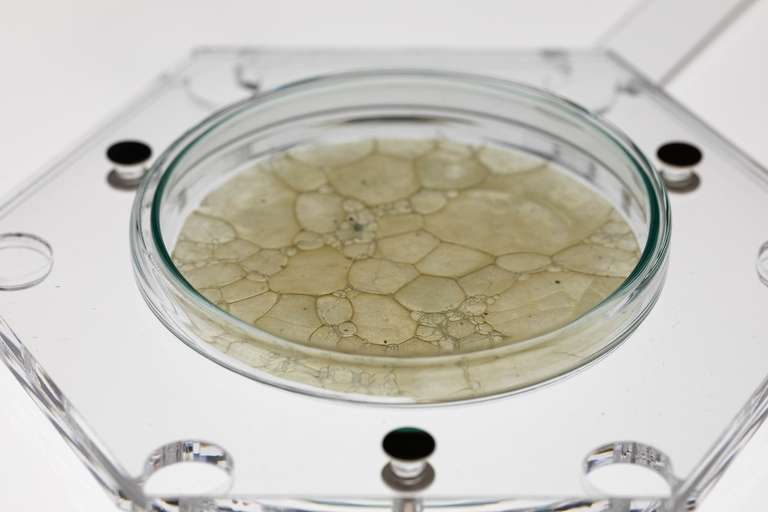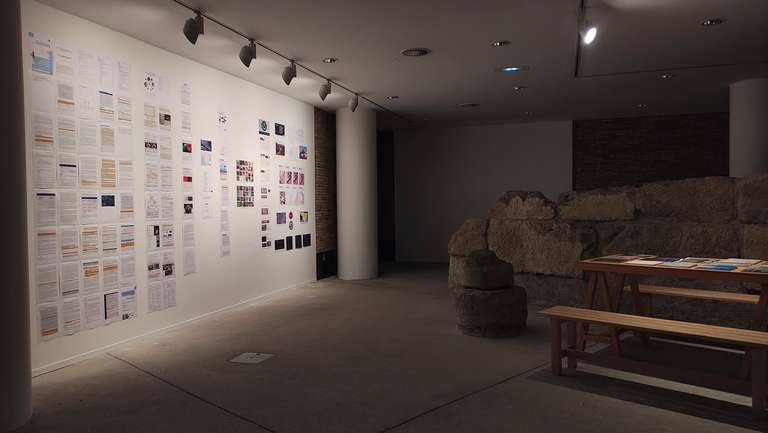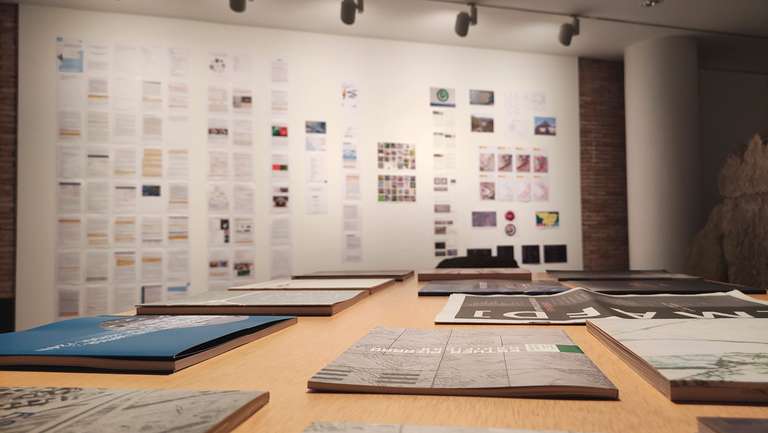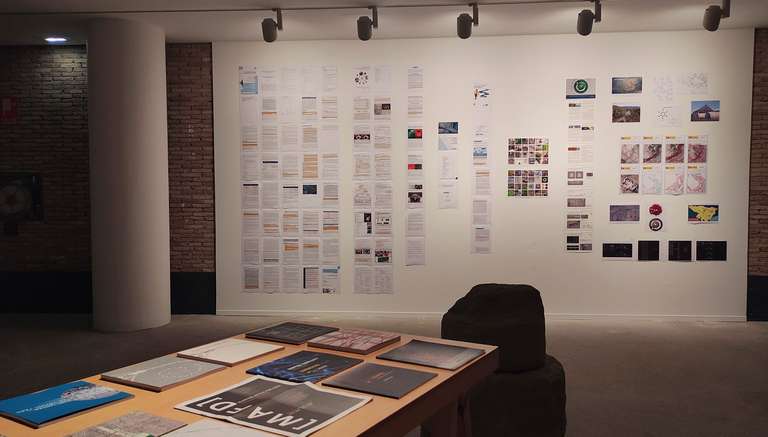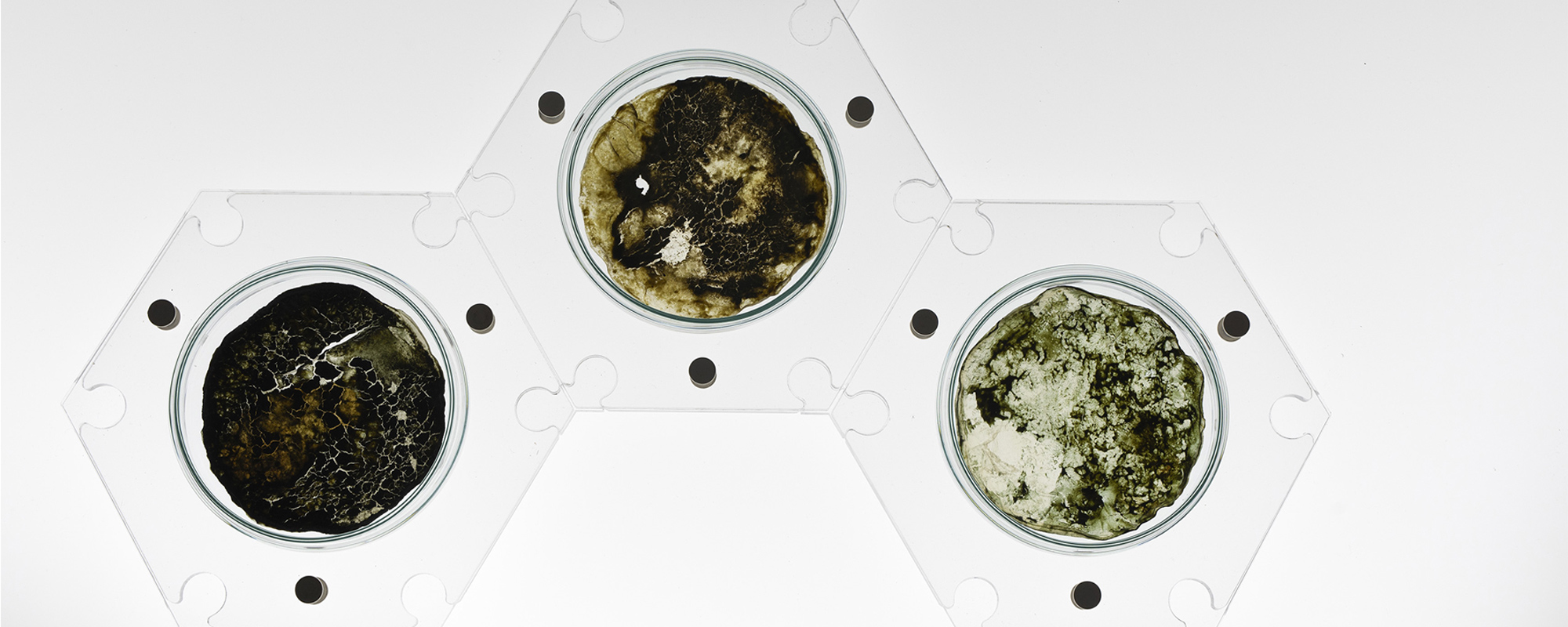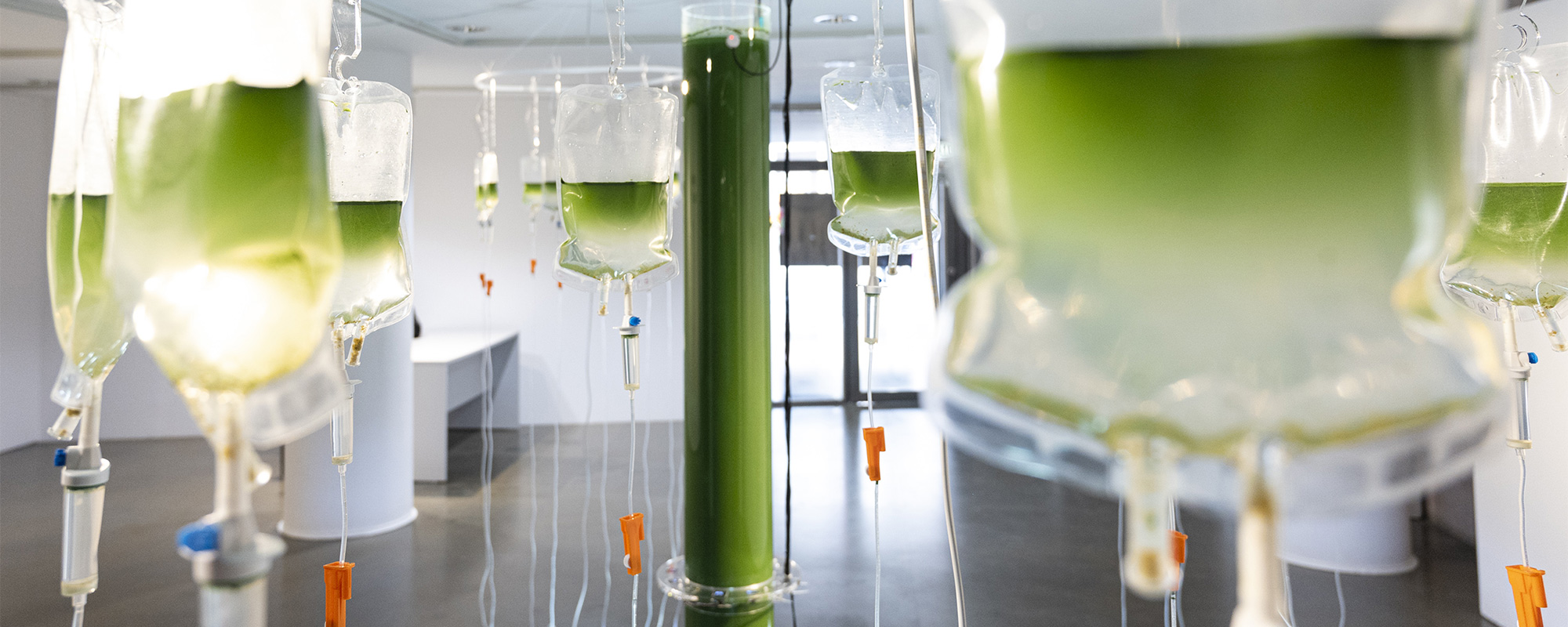FRAGMENTED ECOLOGIES :: WATER POLLUTION © 2023
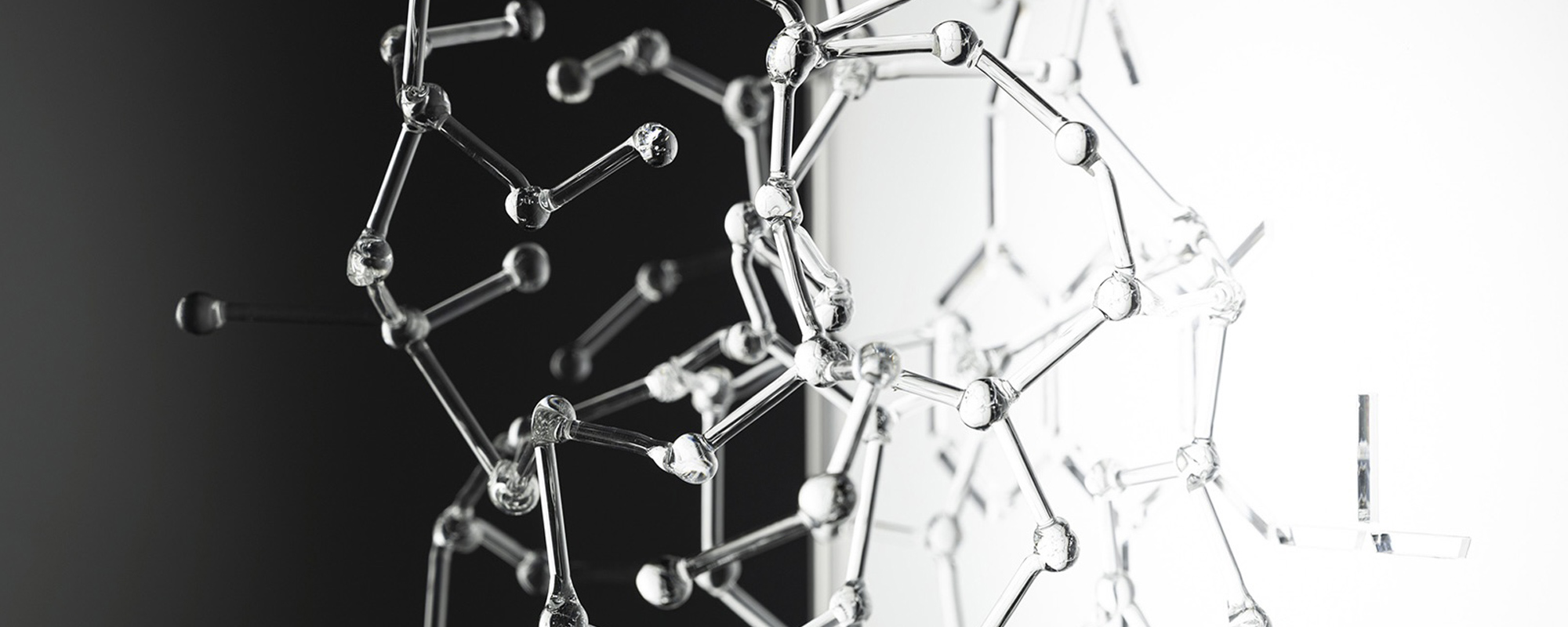
A fragmented ecosystem is one that, due to changes in a habitat, either as a consequence of geological processes or human activities (such as agriculture, industry or urbanisation), alters the environment and presents discontinuities that affect the living conditions of the species that inhabit it.
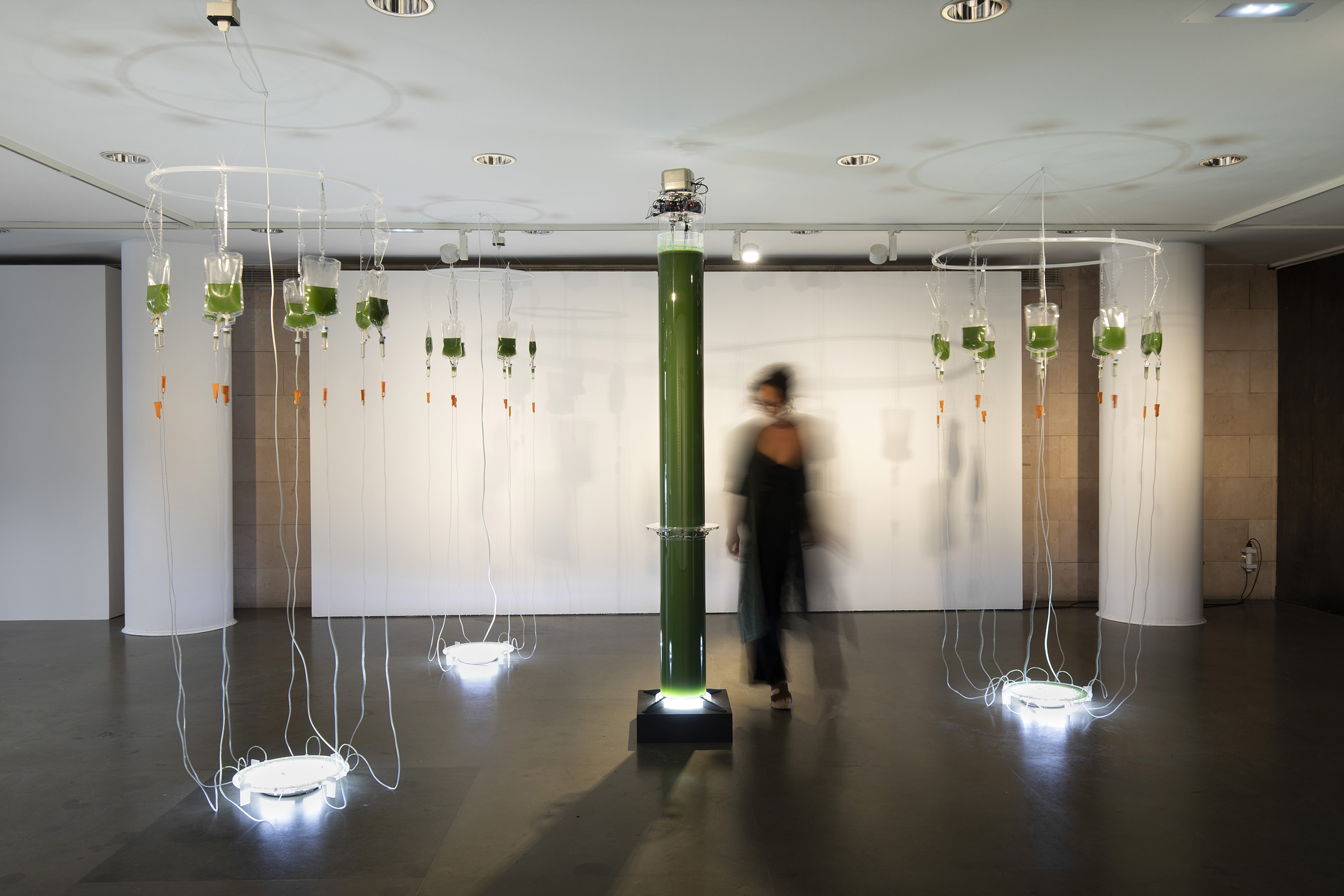
The Gaia theory, put forward in the 1970s by the British scientist James Lovelock, is a scientific hypothesis that the Earth operates as a self-regulating system, similar to a living organism. In relation to the degradation that humans have exerted on the Earth, it can be stated that pollution is one of the factors that most affect climate change and, undoubtedly, has a great impact on the imbalance of terrestrial and aquatic ecosystems. In this artistic research we focus on the study of interspecies water stress, derived from pesticide pollution.
The evolution of the project has led to the creation of a biopoetic story. The different series that have emerged from the research consider their result as a narrative in which the theoretical foundations shape various sculptural pieces and installations. The viewer is immersed in a narrative of silent and poetic activism that highlights the problems inherent to water pollution in our rivers.
Fragmented Ecologies :: Water Pollution (42º30'52''N; 0º21'6''W) is structured as a narrative consisting of four chapters or nodes, accompanied by an introductory epilogue. It proposes an experiential and phenomenological journey that guides the viewer through the different agents involved, shifting the traditionally anthropocentric approach towards an ecosophical biocentrism. Through visual metaphors, the aim is to highlight the four main elements that interact in this fragmented and altered ecology, and that build the fabric of our water ecosystem: the molecule (lindane), the agent (Inquinosa), the receptor (river Gállego) and the recovery process (microalgae).
NODE 00 :: INTROEPILOGUE: BIOALGAELAB INTERSPECIES
BioAlgaeLab Interspecies is conceived as a co-creation between human and non-human organisms, which understands the artistic work as an unstable, changing and mutant entity. This helps us to explore the expressive capacity of both its materiality and its horizontal and biocentric production process. A polyphonic ensemble of multiple temporalities emerges with a prominent protagonist: microalgae.
The proposal is to create an artistic installation that functions as a laboratory monitored by sensors to control the cultivation of spirulina (Limnospira platensis). In addition to the benefits of air purification through the release of oxygen into the environment, the biomass generated has been used to create three biological "skins" that indicate the spatial coordinates of our eco-environmental story.
Aditional information BioAlgaeLab Interespecies
NODE 01 :: FRAGMENTATION: LINDANE (THE MOLECULE)
Lindane is the common name for the gamma-isomer of 1,2,3,4,5,6-hexachlorocyclohexane (HCH). The molecular structure of HCH consists of a ring of six carbon atoms, to which are attached one chlorine and one hydrogen atom at each carbon position. Lindane and technical HCH were used as broad-spectrum, contact-acting pesticides in both agricultural and non-agricultural applications. Once released into the environment, lindane can be dispersed into all environmental compartments, causing irreparable damage.
This space is composed of two sculptural series that interpret the formulation and molecular structure of five groups of pesticides, including lindane. The substances represented are: organochlorines, carbamates, triazines, urea and organophosphates.
The series entitled Molecular Structures deals with the representation of the molecular formulation of the five groups of pesticides identified. It is composed by superimposing one sheet of icy acrylic and two of transparent acrylic. Each layer contains the molecular formulation, cut out by laser cutting, and the chemical formulation etched on its surface. The accumulation of chemical formulations is regrouped in a new visual element that acts by transparency and superimposition of modular registers, as in new chemical tests where the different substances are mixed together to record new formulations.
The formalization of Molecular Swarms consists of an interlacing of hexagons of borosilicate glass rod, crowned at its end or angle by a vitreous sphere that represents the molecular atom. A geometric chaos, transparent and enigmatic, activated by a light box that supports it and enhances the physicality and material qualities of the glass. The light box is crowned by the molecular lattice of the pesticide family represented: organochlorines, organophosphates, carbamates, triazines and urea.
NODE 02 :: BIOTIC FACTORS: INQUINOSA (THE CAUSE)
From 1975 to 1988, the company Industrias Químicas del Noroeste, S. A. (Inquinosa), was manufacturing a pesticide composed of lindane, intended for agricultural and livestock use, in its plant located in the town of Sabiñánigo, in the province of Huesca, on the banks of the Gállego river (tributary of the Ebro river). The production of this substance continued until 1992. It is estimated that during this period, the company generated around 6,800 tons of solid waste per year, together with a variable amount of liquid waste ranging from 300 to 1,500 tons per year. This equates to a total of approximately 115,000 to 160,000 tons of HCH waste.

NODE 03 :: ABIOTIC FACTORS: THE RIVER GÁLLEGO (THE TERRITORY)
The Ebro river is a watercourse located in the northeast of the Iberian Peninsula. It is the second largest river in the peninsula, only surpassed by the Tagus, and holds the title of the river with the largest flow in Spain. It flows entirely through our country and extends for 930 kilometers, with a flow of 426 cubic meters per second. One of its main tributaries on the left bank is the Gállego, which covers a length of 193.2 kilometers and has a flow of 34.2 cubic meters per second. Along its course, there are important reservoirs, such as the one in Sabiñánigo.
Through drawings and sculptures, we use mapping and visualization of hydro-fragmentation phenomena as tools to raise awareness of environmental impacts and encourage conservation and restoration practices that mitigate the effects of hydrological fragmentation.
Two series make up the artistic core of this space. The central piece, Cartografía hidrofragmentada, is made up of eight sculptural modules that frame the area affected by lindane water pollution in the course of the Gállego river as it passes through Sabiñánigo. Starting from the identification of the geographical coordinates (latitude and longitude) of the Inquinosa company and using the SIGPAG tool (previously introduced in the section dedicated to abiotic factors), we proceeded to the geographical fragmentation of the investigated territory into vector layers of information (plots, enclosures, permanent pastures, landscape elements, Natura Network, nitrates, phytosanitary and protection zones for the sustainable use of phytosanitary products). The result of activating and deactivating these layers of the territory has made it possible to generate a three-dimensional combination, like a geographical puzzle, fragmented, broken and disjointed; a dismembered metallic crust that shows the discontinuities of the territory and perforates in its dermis the geographical coordinates of our map. It forms a visual game whose combination generates a new geographic condition that shows us its fragmentation and discontinuity.
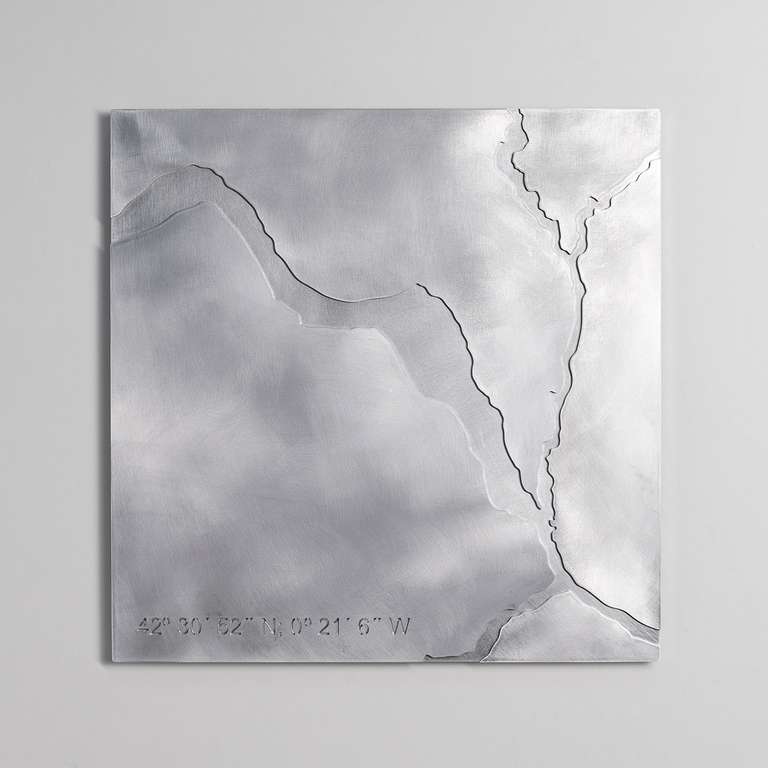
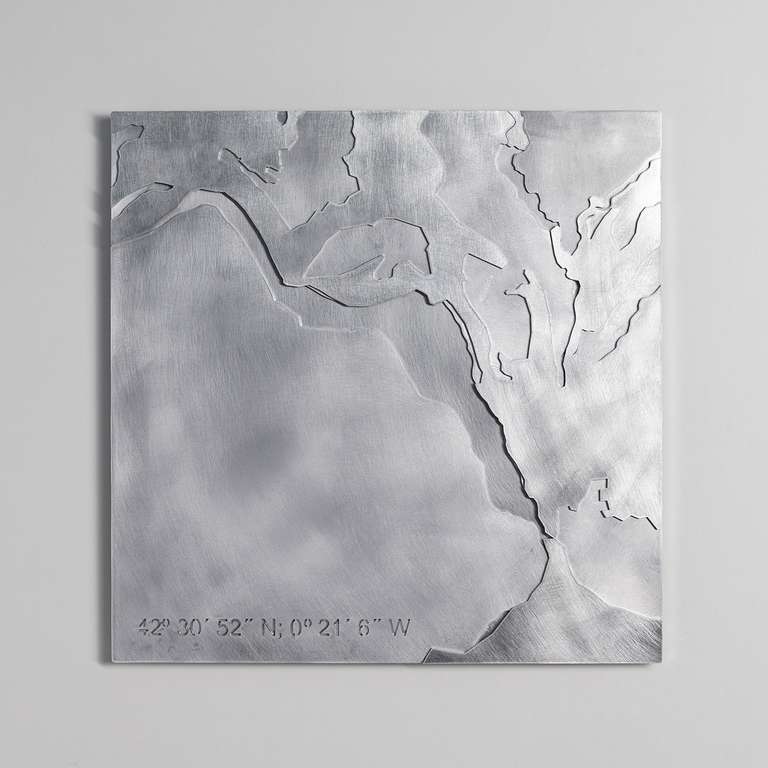
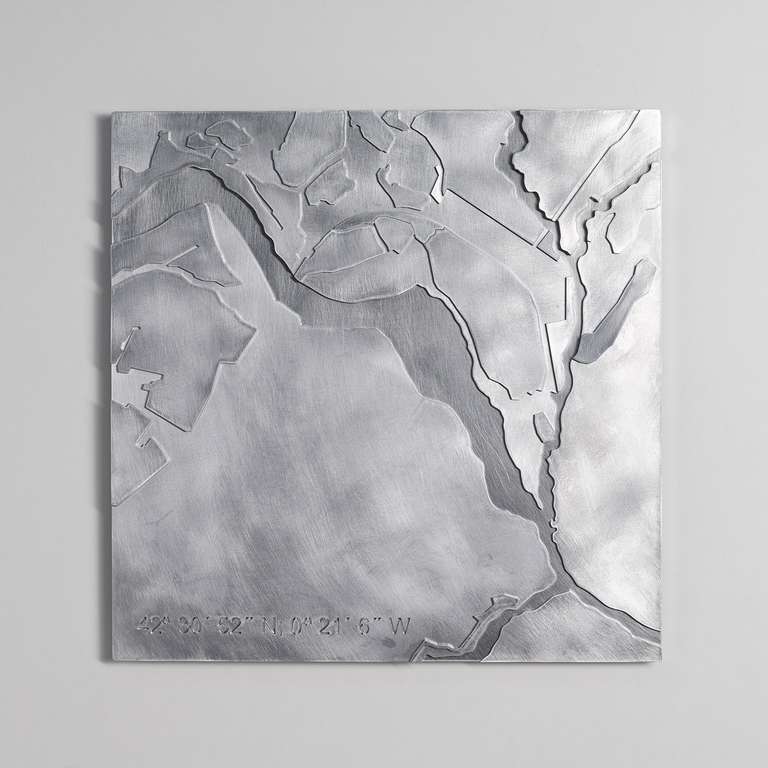
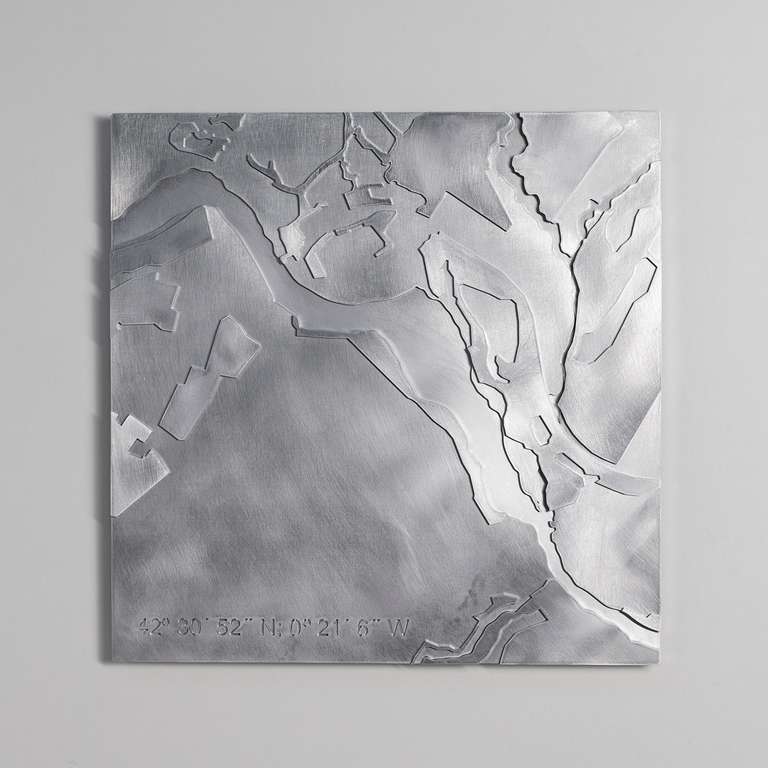
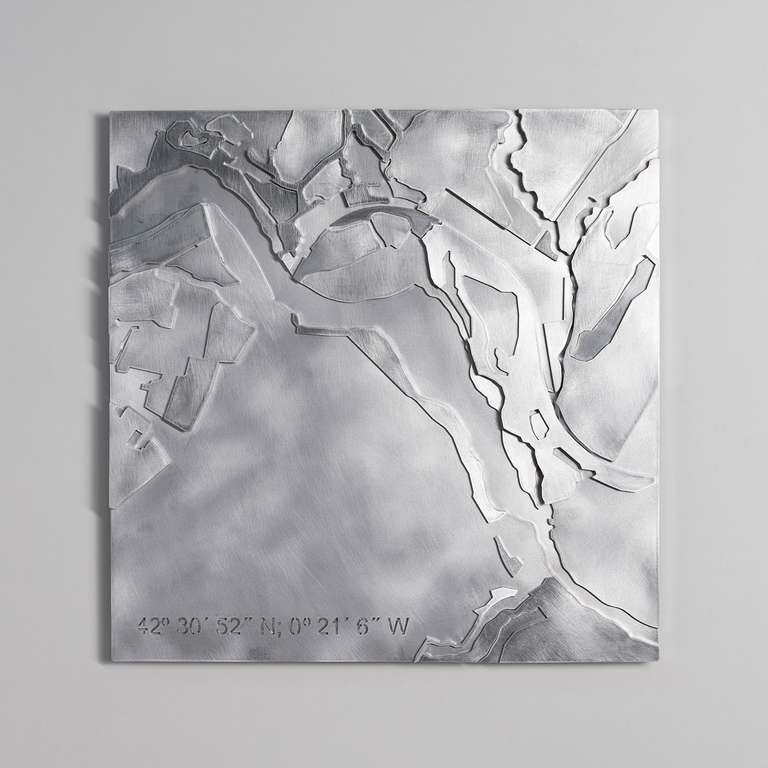
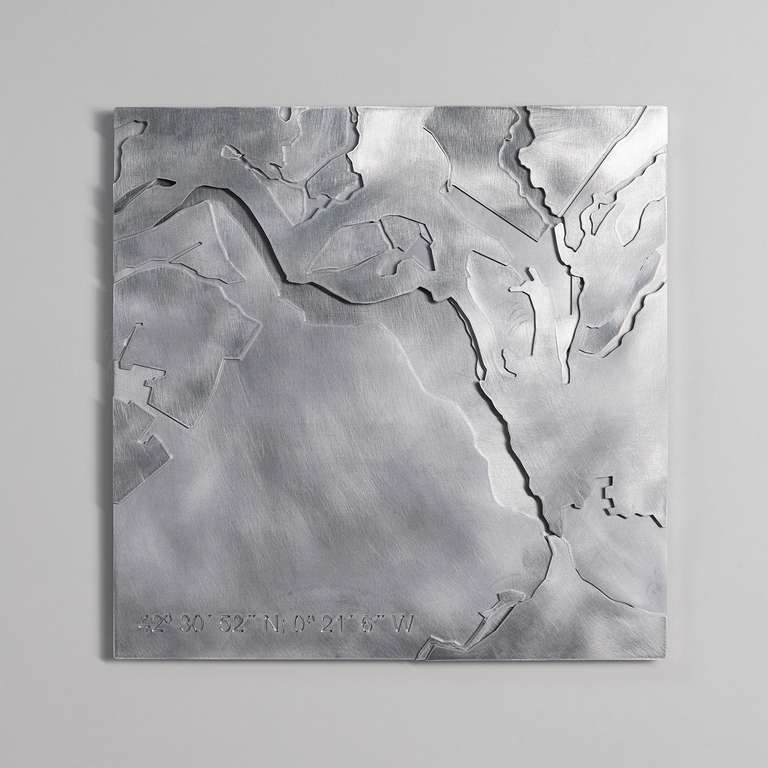
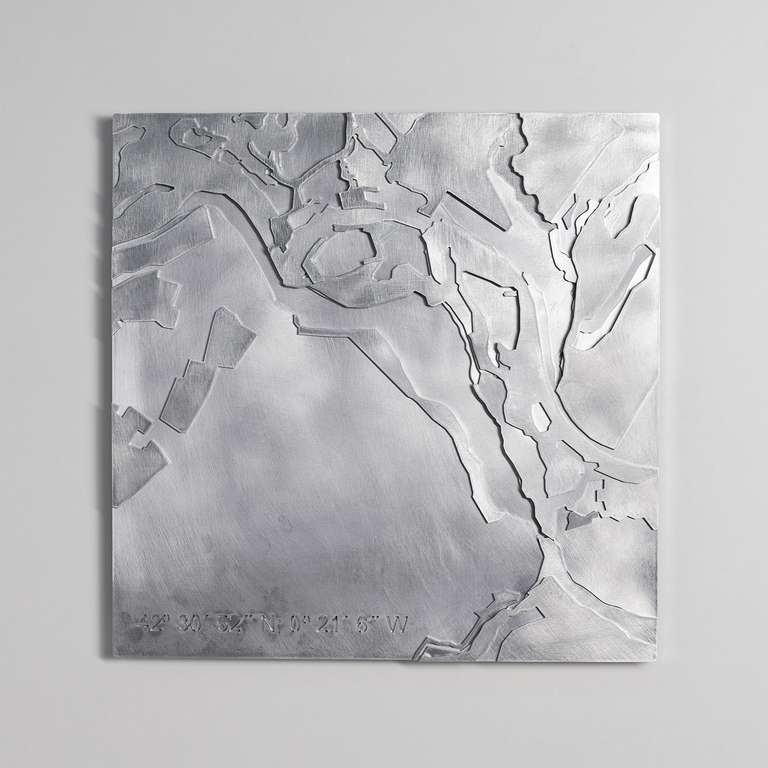
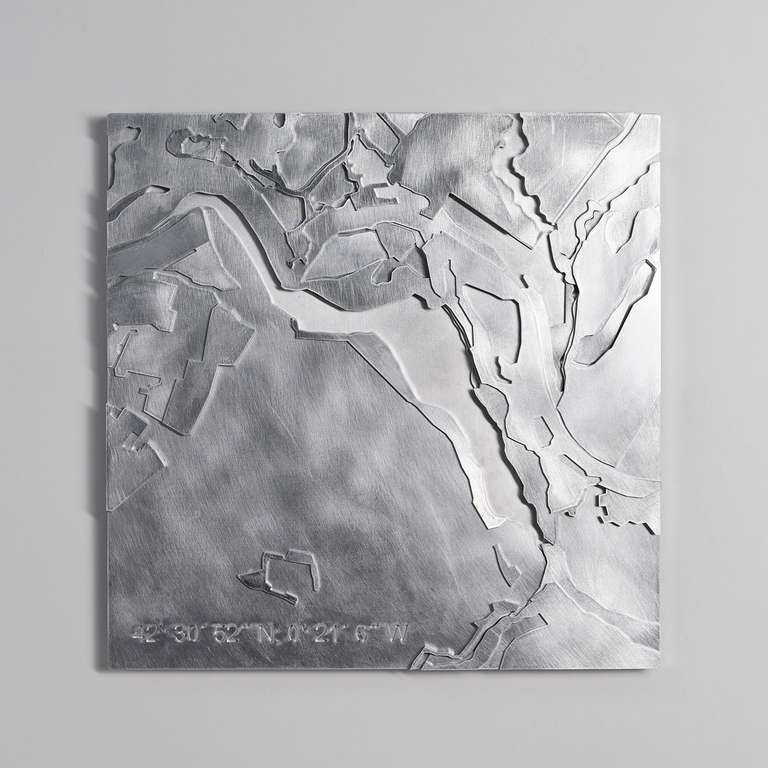
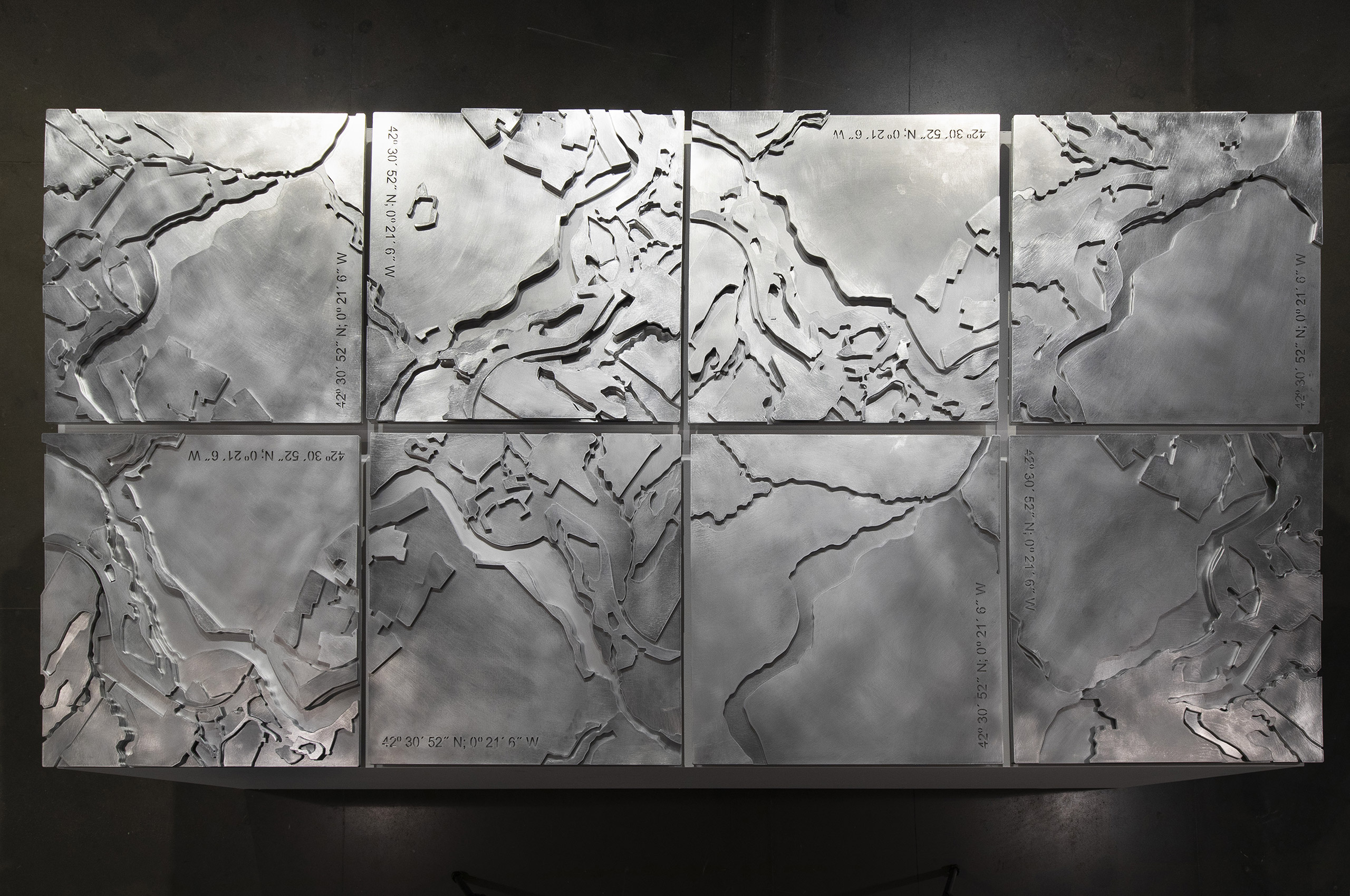
Opposite to the series of the ground, eight drawings that make up the series Apuntes hidrofragmentados, which interpret two-dimensionally an exploded territory. A series that hybridizes digital fabrication, collage and drawing with mixed media. A visual exploration where color, line and textures are the protagonists.
NODE 04 :: BIOREMEDIATION (SUSTAINABLE TREATMENT)
Biological treatment methods for contaminated waters and soils involve the use of microorganisms or vegetation. These biological agents have the ability to degrade pollutants and transform them into less harmful substances, as well as to absorb and accumulate them. Among the various environmental remediation methods, the potential of phyco-remediation is being explored. This environmental technique employs microalgae (cyanobacteria) and macroalgae (commonly called algae) to reduce or eliminate pollutants present in water or soil.
This chapter of our project is conceived as a laboratory for experimentation of biomaterial samples, whose common element is the use of spirulina biomass (fresh or dried) in its testing and formulation. BioLabMatrix is constituted as a material library, whose arrangement is determined by a hexagonal matrix (remember the hexagonal formulation of lindane). n invisible lattice that, like a game table activated by light, brings us closer to the materiality of the tissues experimented and protected in glass Petri dishes. A mosaic of connectors, links and hexagons that helps us to reinterpret impossible formulas in our bioexpositor.
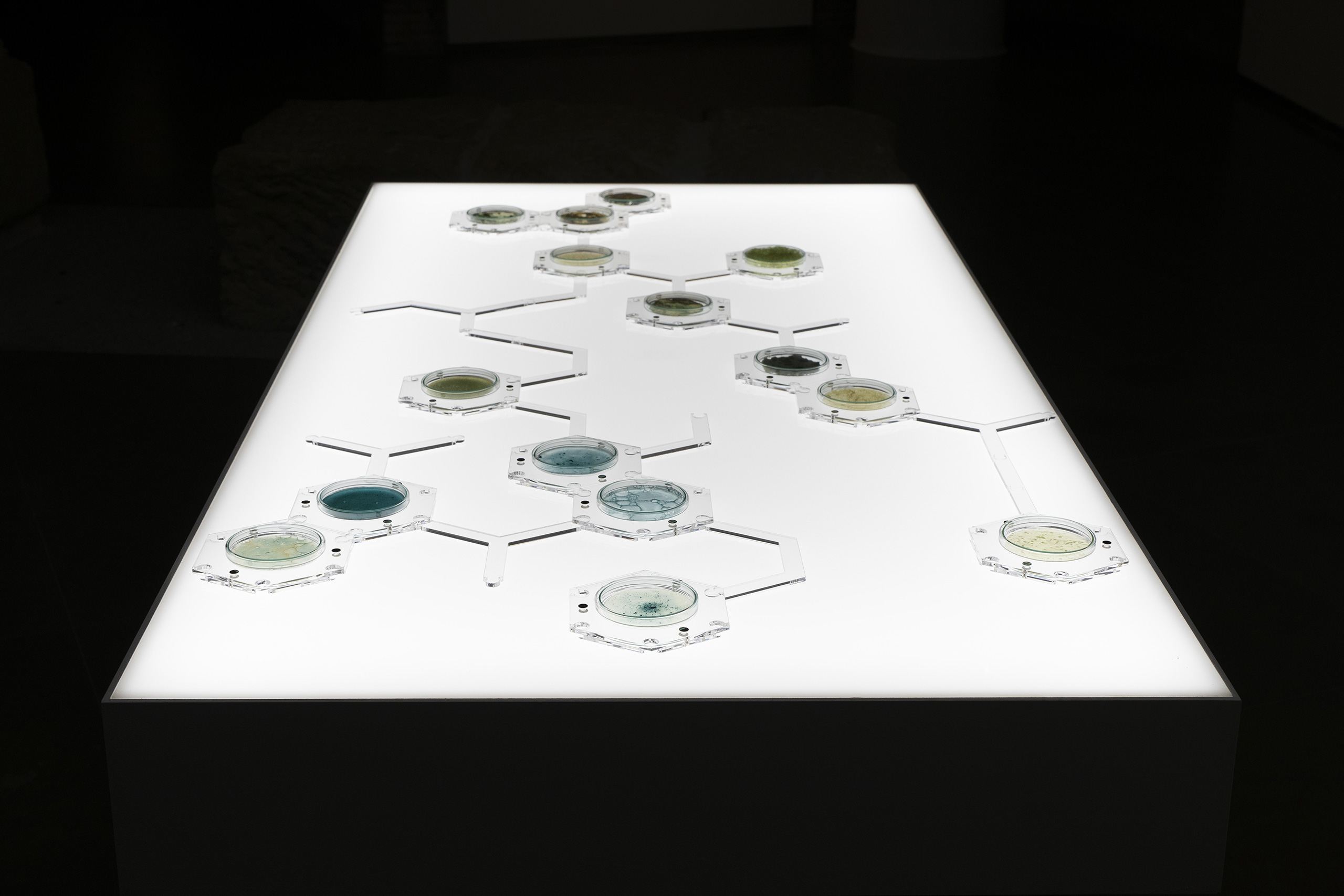
Latent Interspecies is a generative projection that uses the microscopic look as a door to a visual, dynamic and magnetic world that shows us the multiplying capacity of cyanobacteria or microalgae. The circle functions as a microscopic peephole, but also as an aseptic container where biologists analyze their samples. Green is the dominant color. Change and transformation act as the engine and magnet of living, resilient and hopeful nature. His images start from physical biomaterialities that merge to introduce us into a world of images generated by artificial intelligence and generative elements.
The Gaia theory, put forward in the 1970s by the British scientist James Lovelock, is a scientific hypothesis that the Earth operates as a self-regulating system, similar to a living organism. In relation to the degradation that humans have exerted on the Earth, it can be stated that pollution is one of the factors that most affect climate change and, undoubtedly, has a great impact on the imbalance of terrestrial and aquatic ecosystems. In this artistic research we focus on the study of interspecies water stress, derived from pesticide pollution.
The evolution of the project has led to the creation of a biopoetic story. The different series that have emerged from the research consider their result as a narrative in which the theoretical foundations shape various sculptural pieces and installations. The viewer is immersed in a narrative of silent and poetic activism that highlights the problems inherent to water pollution in our rivers.
Fragmented Ecologies :: Water Pollution (42º30'52''N; 0º21'6''W) is structured as a narrative consisting of four chapters or nodes, accompanied by an introductory epilogue. It proposes an experiential and phenomenological journey that guides the viewer through the different agents involved, shifting the traditionally anthropocentric approach towards an ecosophical biocentrism. Through visual metaphors, the aim is to highlight the four main elements that interact in this fragmented and altered ecology, and that build the fabric of our water ecosystem: the molecule (lindane), the agent (Inquinosa), the receptor (river Gállego) and the recovery process (microalgae).
NODE 00 :: INTROEPILOGUE: BIOALGAELAB INTERSPECIES
BioAlgaeLab Interspecies is conceived as a co-creation between human and non-human organisms, which understands the artistic work as an unstable, changing and mutant entity. This helps us to explore the expressive capacity of both its materiality and its horizontal and biocentric production process. A polyphonic ensemble of multiple temporalities emerges with a prominent protagonist: microalgae.
The proposal is to create an artistic installation that functions as a laboratory monitored by sensors to control the cultivation of spirulina (Limnospira platensis). In addition to the benefits of air purification through the release of oxygen into the environment, the biomass generated has been used to create three biological "skins" that indicate the spatial coordinates of our eco-environmental story.
Aditional information BioLabMatrix e Interespecies latentes
The exhibition is completed by a research space where the documents, sources and references reviewed during the research of the project are collected. Also attached is documentation of the work process in the studio.
CREDITS ::
Conceptualization: Esther Pizarro
Production: Esther Pizarro Studio
Technology: Markus Schroll
Audiovisual: Markus Schroll
Funding: Project carried out with the support of the Diputación de Huesca and the Ministry of Culture and Sports.
Winning project of the Contract for the development of artistic projects of creation and research Ramón Acín 2021.
Winning project of the Ministry of Culture and Sport's Grants for the Promotion of Spanish Contemporary Art, creation and artistic production 2022.
EXHIBITED IN ::
Sala Diputación Provincial de Huesca. “Ecologías Fragmentadas :: Contaminación Hídrica (42º30’52’’N; 0º21’6’’W)”. Diputación Provincial de Huesca, Huesca, España. 06/10/2023 al 19/11/2023
ASSOCIATED CATALOG ::
Pizarro, Esther (2023); Catálogo: Ecologías Fragmentadas :: Contaminación Hídrica (42º30´52´´N; 0º21´6´´W). Autor libro. Textos: David Barro y Esther Pizarro. Edita: Diputación Provincial de Huesca. Extensión: 136 páginas. Idioma: español. Formato: 17 x 21 cm. Encuadernación: tapa blanda. ISBN: 978-84-19322-03-6. DL: HU 177-2023
